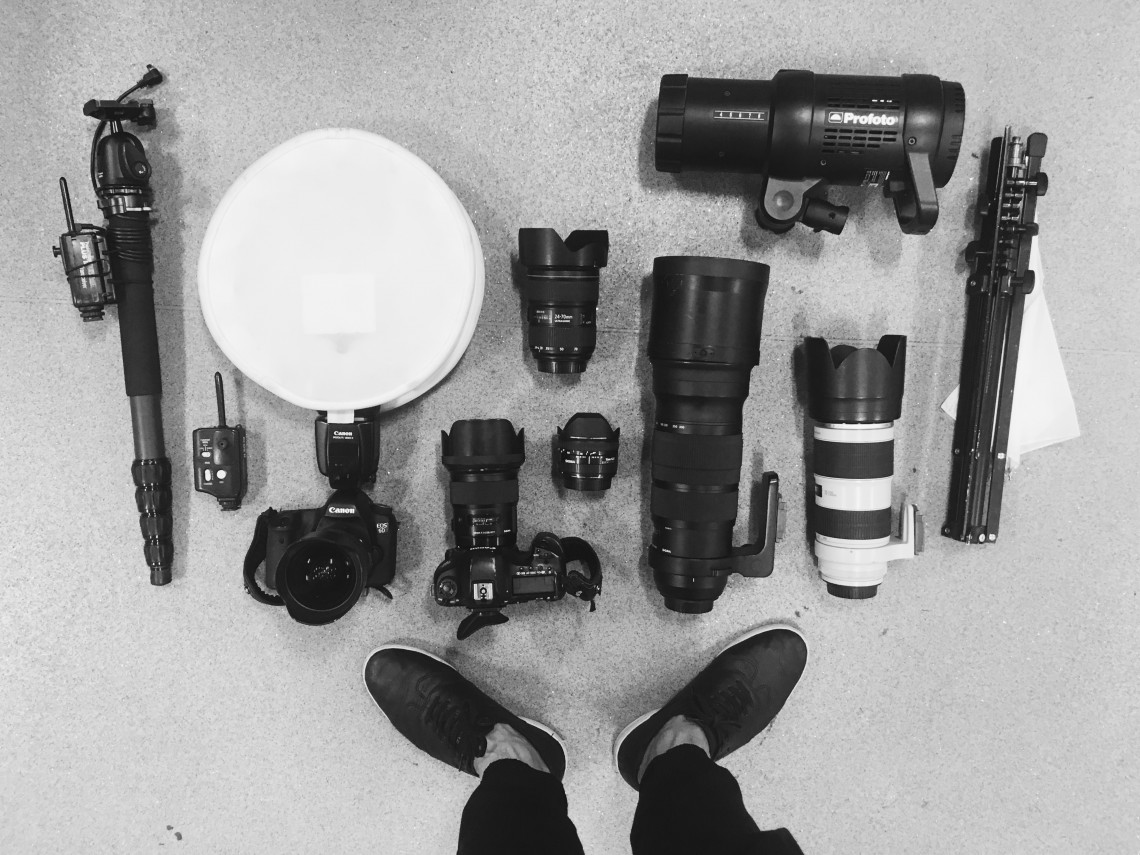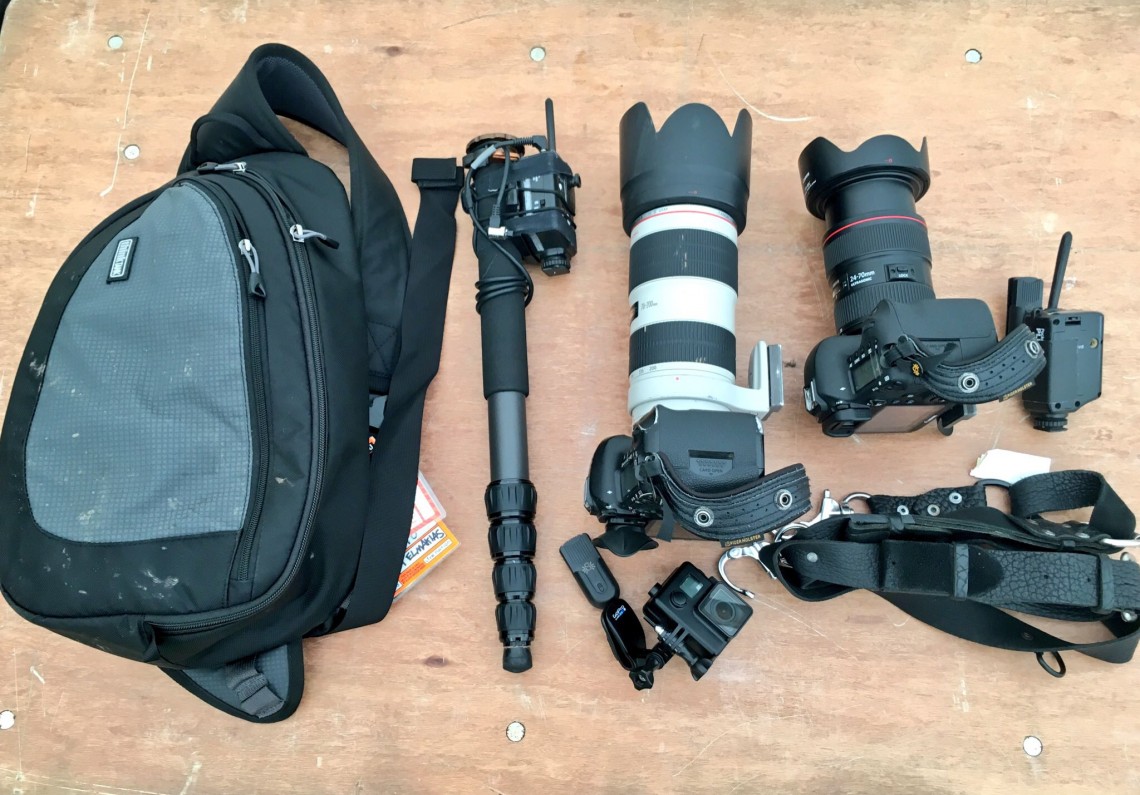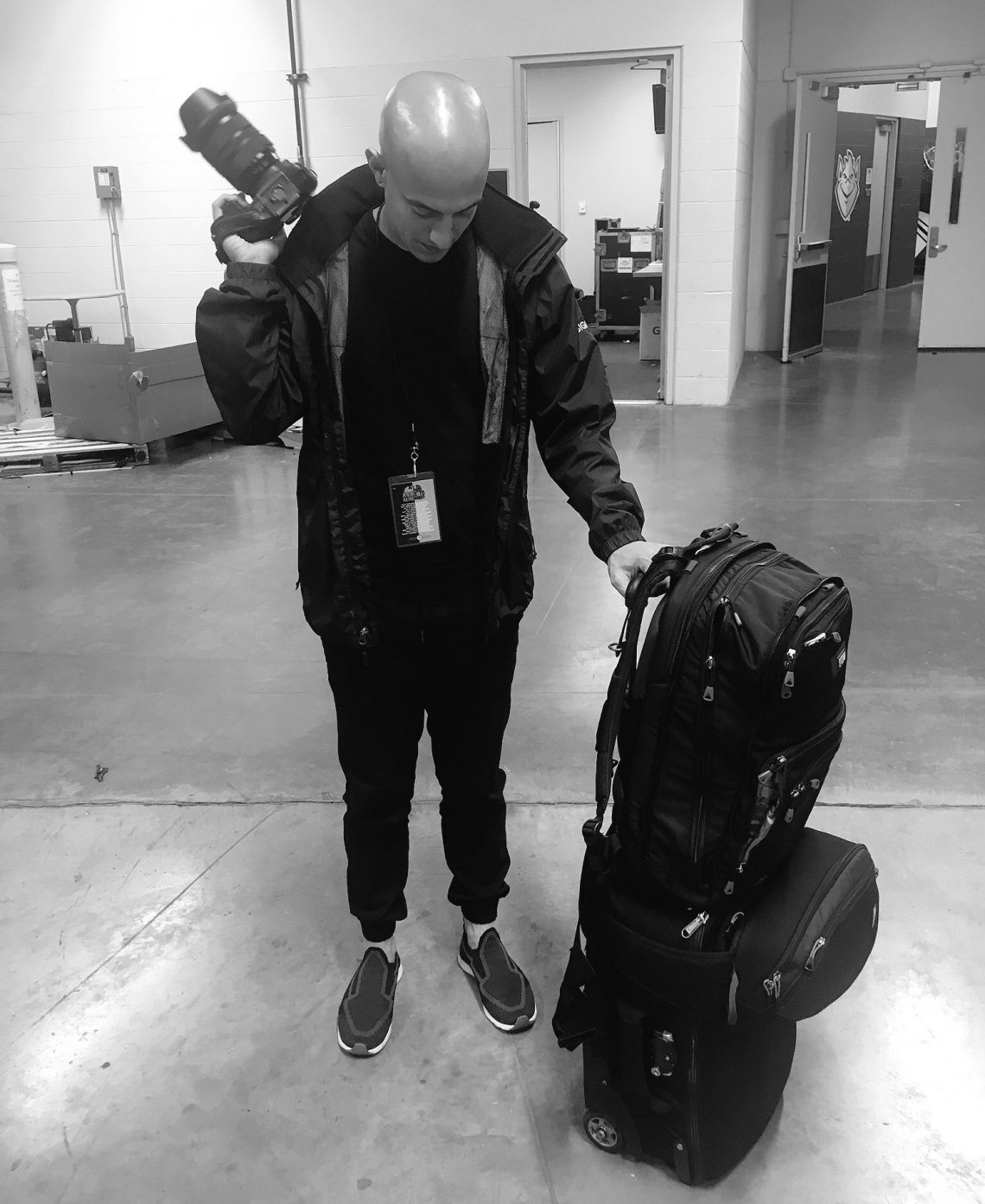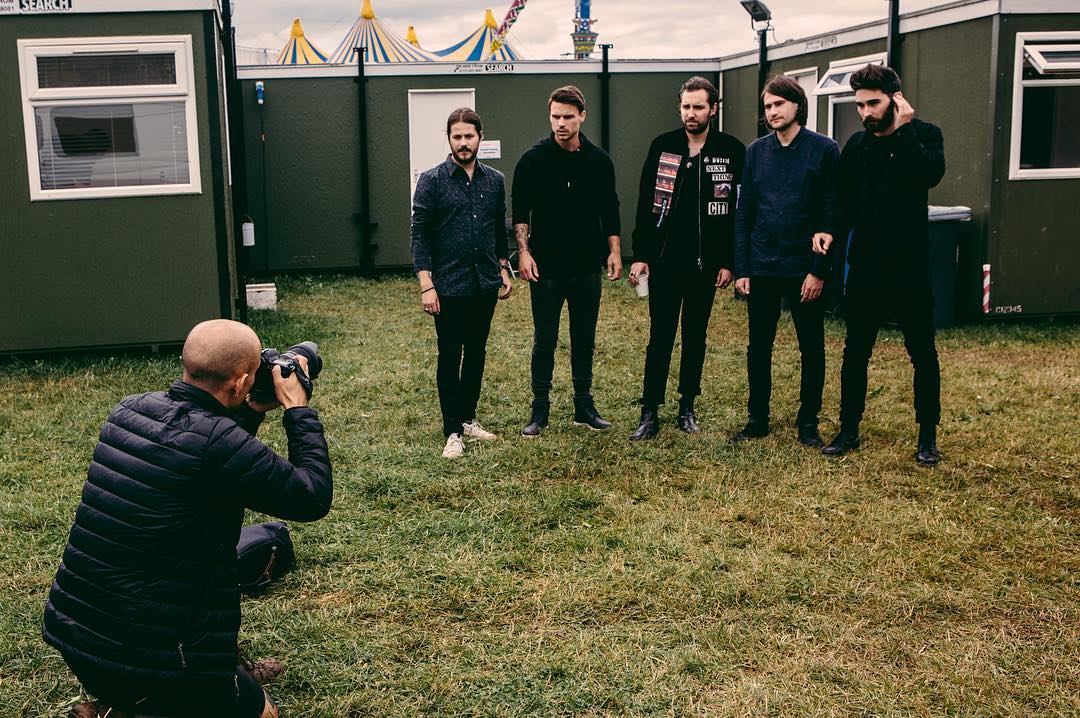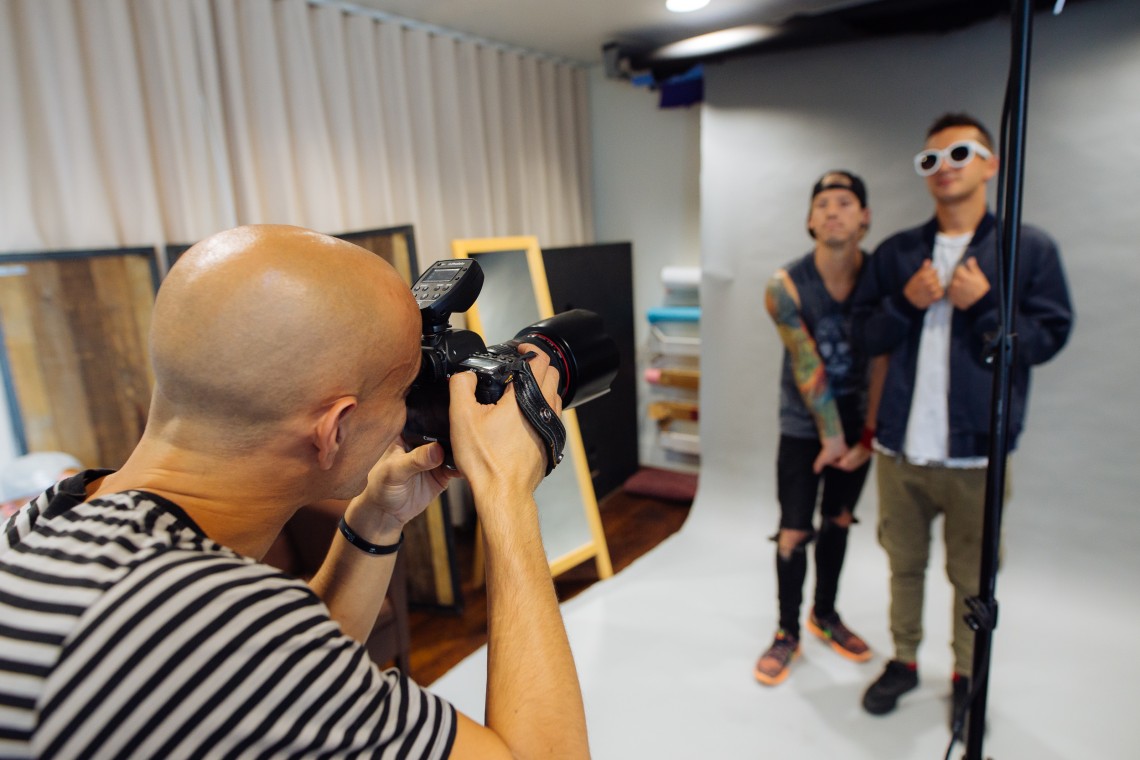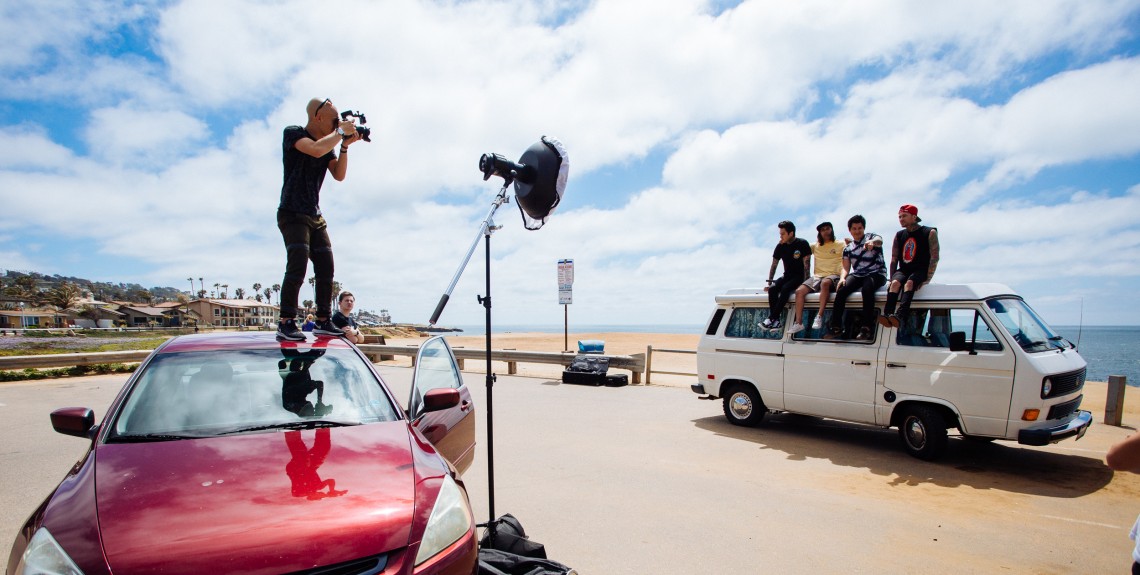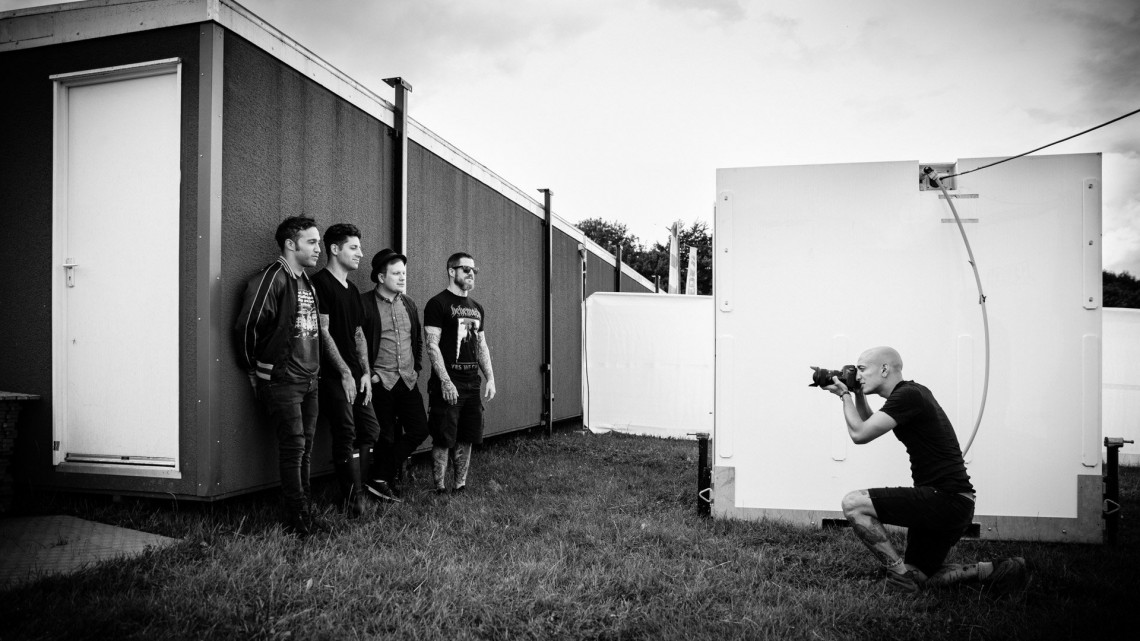Music Photography is one of the most demanding types of photography. You need access to a wide range of focal lengths and setups easily accessible at all times. The moments happen quickly and your job is to catch them. I belive your gear is a set of tools, and different jobs require… well different tools. These are my current setups for Live Music, Tour/ Travel Music Photography Music Festivals and Music Portraits.
* For a beginners gear guide, please check out my best starting camera and lens gear for photographers.
Live Music Photography Gear Setup
Live Music photography is fast, oh boy is it difficult. You want to know what it’s like? Check out this video from an arena show in London. But really – you have to be very fast. I do not suggest carrying heavy gear on your shoulders while you shoot music. It can be okay short term, but long term can injure you.
Keep in mind my live set up is made mostly of prime lenses – because when I shoot live my goal is to get one or two images. I spend a lot of time on every shot. Most people’s job will demand many more images than that – and zoom lenses would probably be the correct tools for them. This way they can cover a variety of focal lengths and turn in a collection of unique images.
Cameras
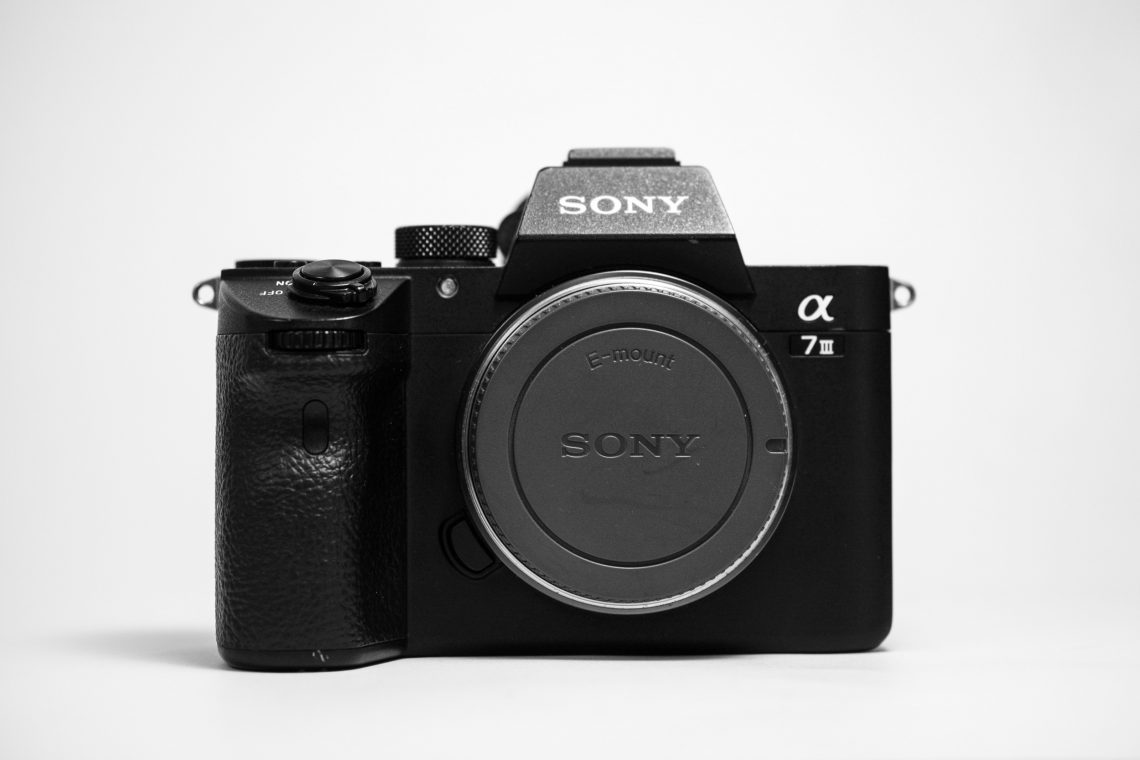
Sony A7III
The Sony A7III is perfect for live music photography. It focuses quickly, and does so in low light situations. You can use high ISO levels without very much noise. The size is smaller than a DSLR, so you will have more room for other gear in your and be able to take smaller bags. The 10 frames a second RAW images is great for never missing a jump shot. This is the camera that convinced me mirrorless was ready for concert photography.
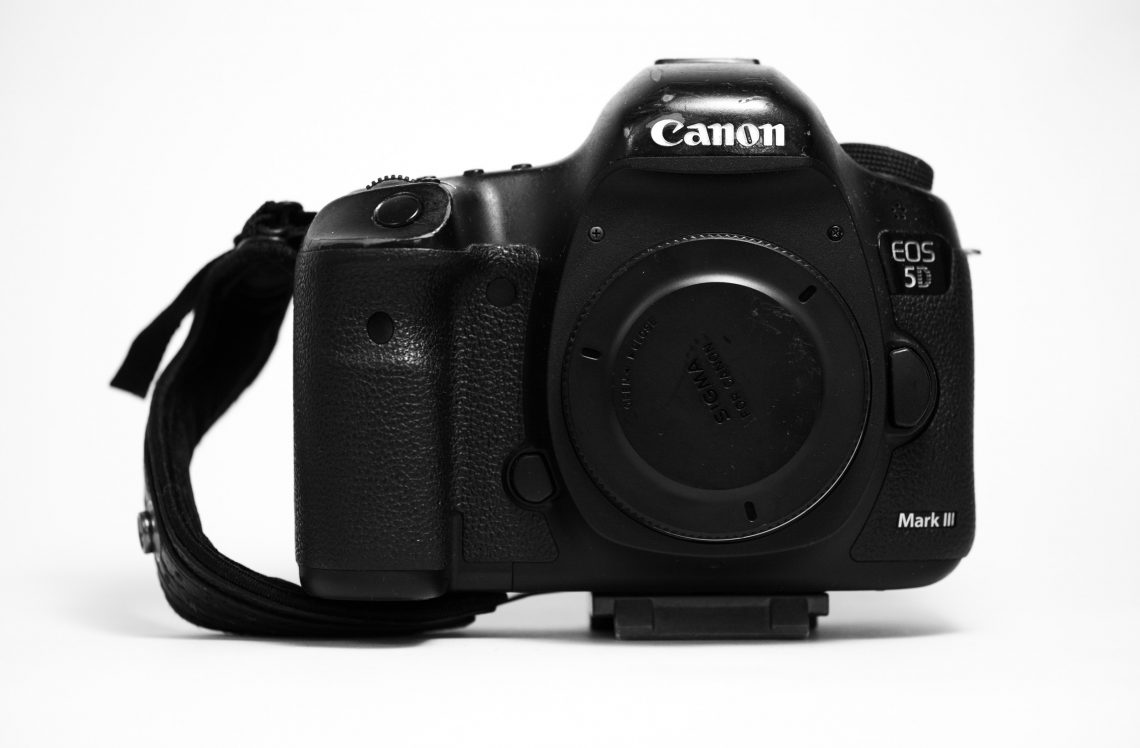
Canon 5D Mark III
I have had this Canon 5d Mark III. It was a great main camera years ago, and it serves as a beautiful backup camera now. I don’t like how bulky it is, but it is very reliable and that is worth a lot. One time I sent it in for repair and I am pretty sure they just replaced the whole thing. Get the Mark IV if you are going to get one in 2019/2020.
Lenses
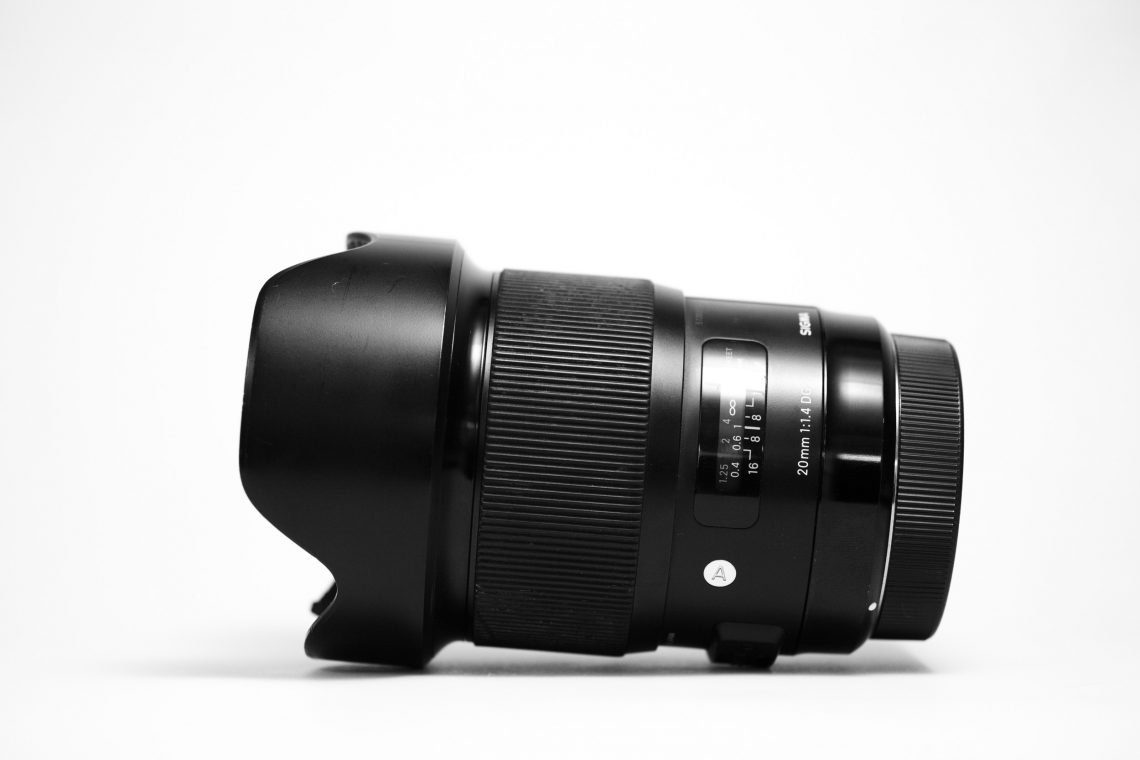
Sigma 20mm f/1.4 Art
The Sigma 20mm is wide, but not too wide. I prefer it over a fisheye or a wider Sigma. The distortion on it is very limited and the images look larger than life. It is particularly useful for getting vertical full body images of artists right from the photo pit.
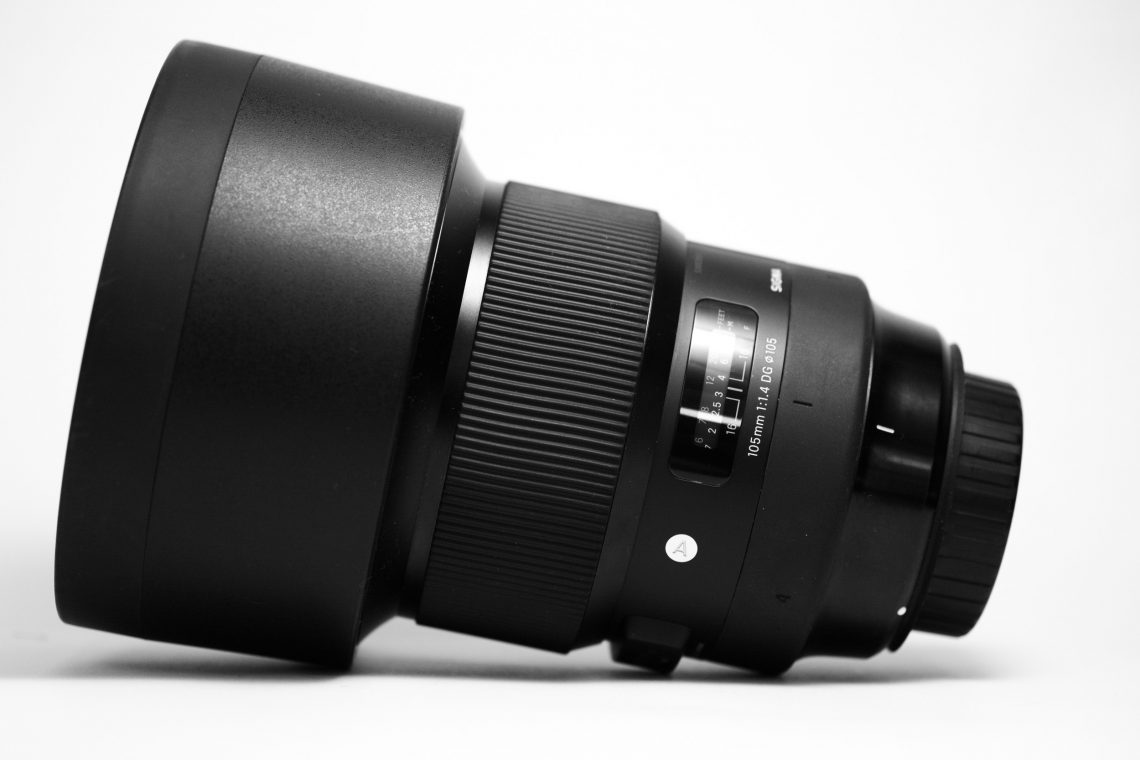
Sigma 105mm f/1.4 Art
The Sigma 105mm is my favorite lens to shoot two thirds or half body shots with from the photo pit. The 1.4 really separates the subject from the stage and pulls them out of the surroundings just enough to force the focus of the viewer. Sharp lens.
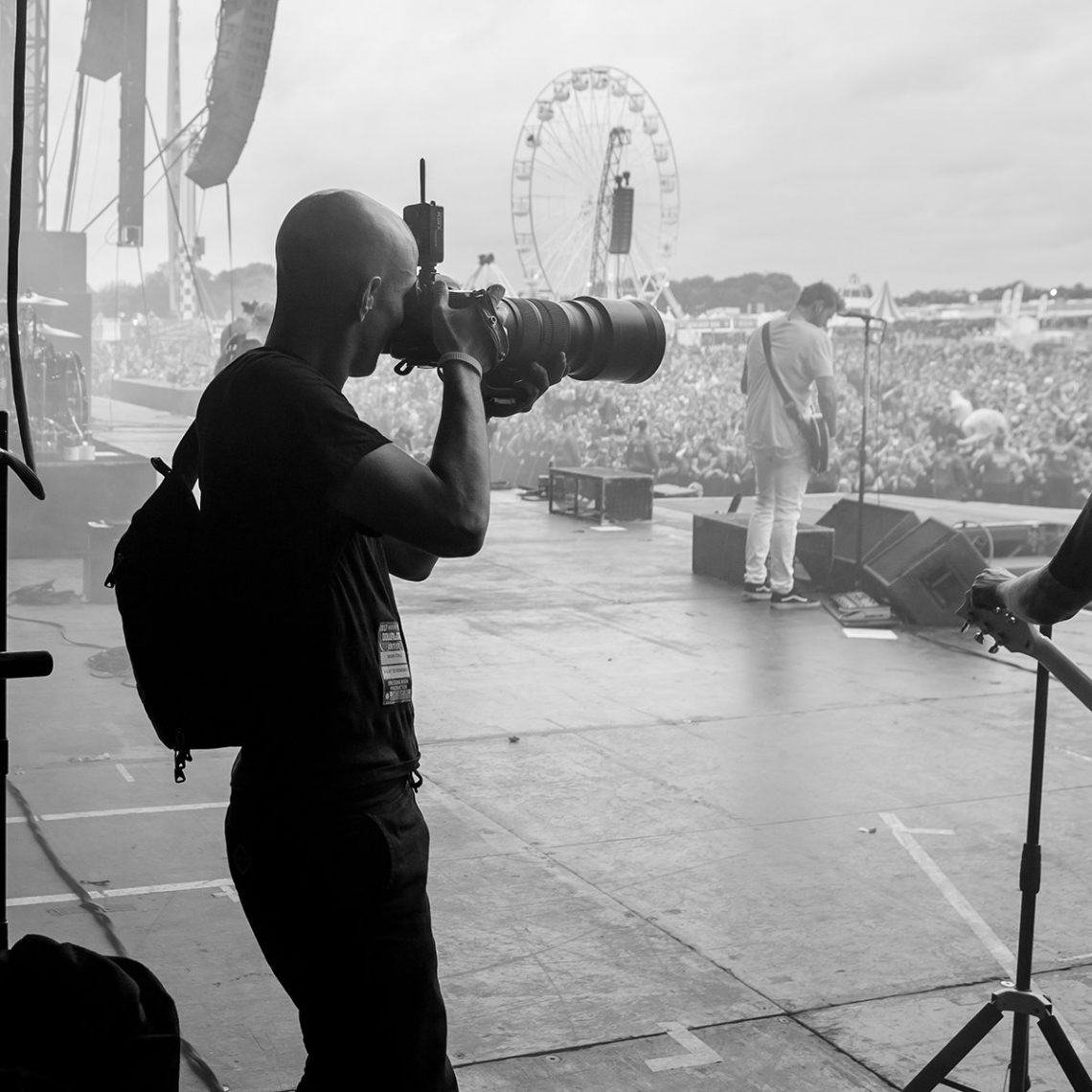
Sigma 120-300mm f/2.8
The Sigma 120-300mm is the heaviest lens I have ever shot with – but man is it fun. Basically a 105mm on steroids. It REALLY separates the subject from their surroundings, often creating a beautiful bokeh around your subject.
Bag
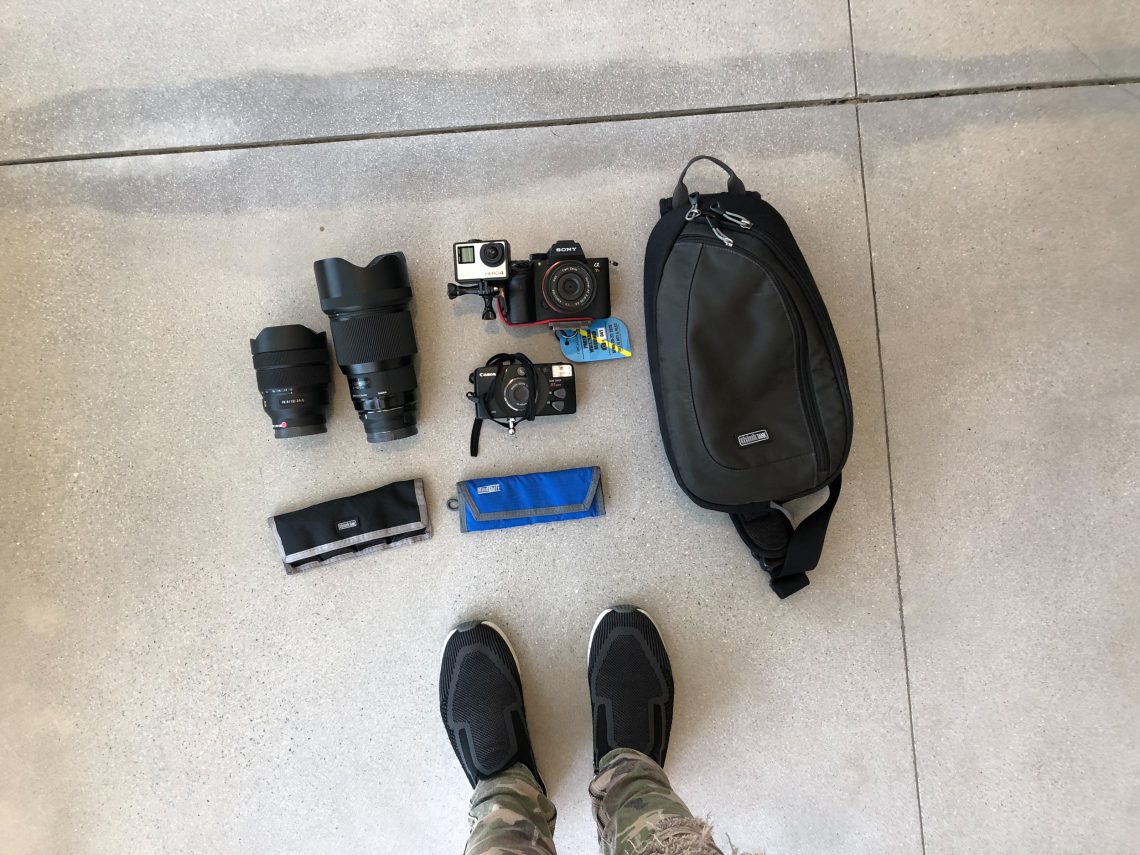
Think Tank Photo TurnStyle 10 V2.0
The Think Tank Turnstyle is the best bag for live photography. I only care one extra lens on me while I shoot, so depending on how big the lens is – I will scale the bag up. They are both able to fit more than one lens, that i just how I use it. This bag sits on your bag, but can swing around to the front side of your body for easy lens swapping.
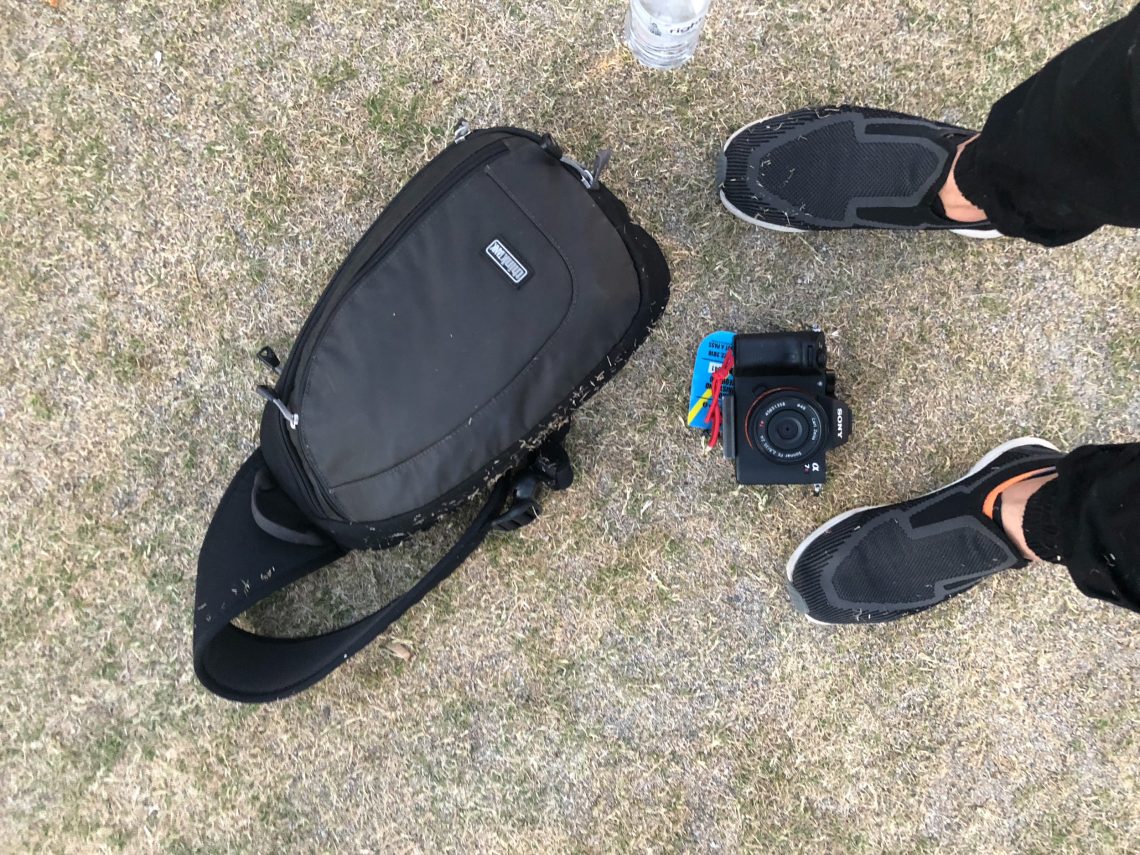
Think Tank Photo TurnStyle 20 V2.0
Same bag, a bit bigger. I’ll use this when I have two lens I need to carry with me, or a very large lens. When I am shooting I usually set it down.
Behind The Scenes

This is me at work, photo by Greg Leddy 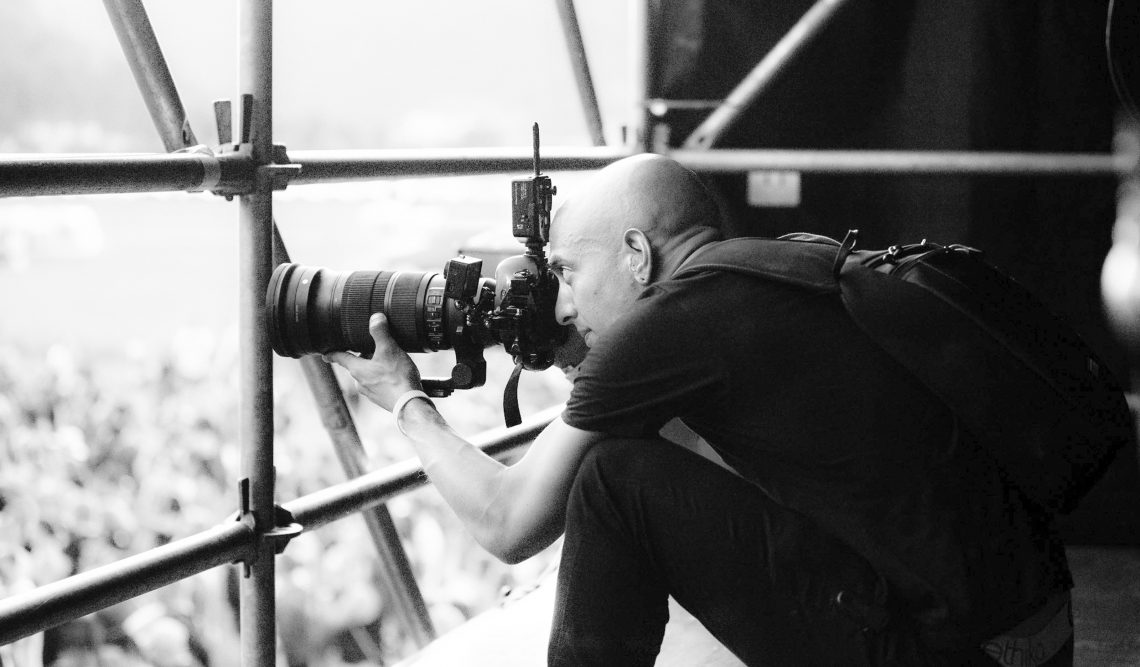
photo by Nicolas Burri 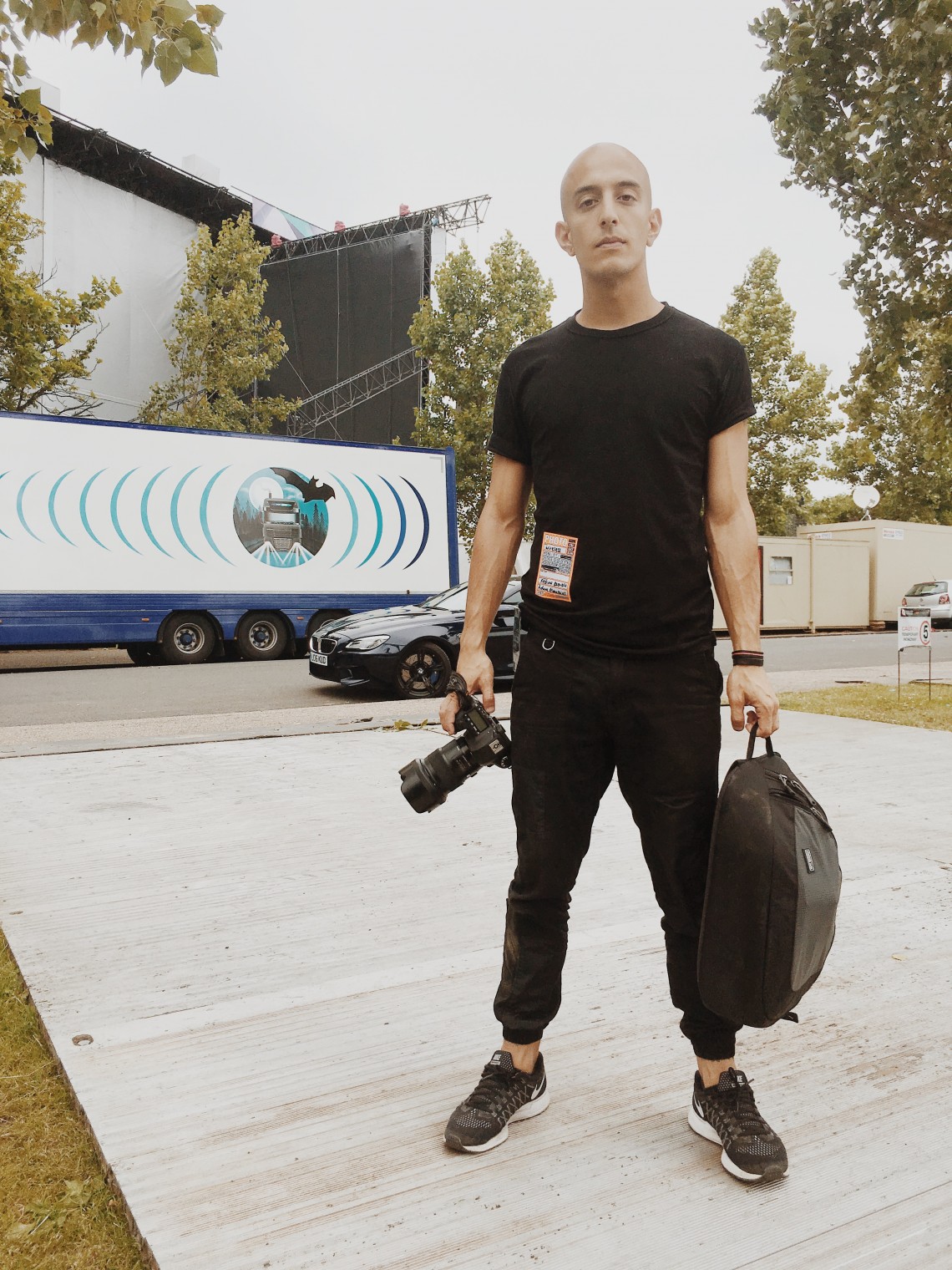
This is me looking funny at Wireless Festival
Tour & Travel Music Photography Gear Setup
Touring with an artist is amazing. You fly with them, eat with them – you live their life. Sometimes it can get quite exhausting so it’s important that all the gear you have on you is exactly what you need. I don’t suggest bringing anything you might use. That being said I usually bring the below setup. I won’t have it all on me at all times. For example if we are going out for dinner – I would not bring my 70-200mm.
Cameras

Sony a7III
The Sony a7III is great for touring with an artist because it is the smallest versatile camera out there. Size is important because you need to be constantly mobile. Van, bus, plane, boat – however you may be traveling. Just make it easier on yourself, keep your gear light.

Canon 5D Mark III
This honestly is my least favorite thing to bring on tour – but I have to bring a backup. I do not carry it on me always, but say I drop my camera or someone spills a beer on it, I have ol’ trusty.
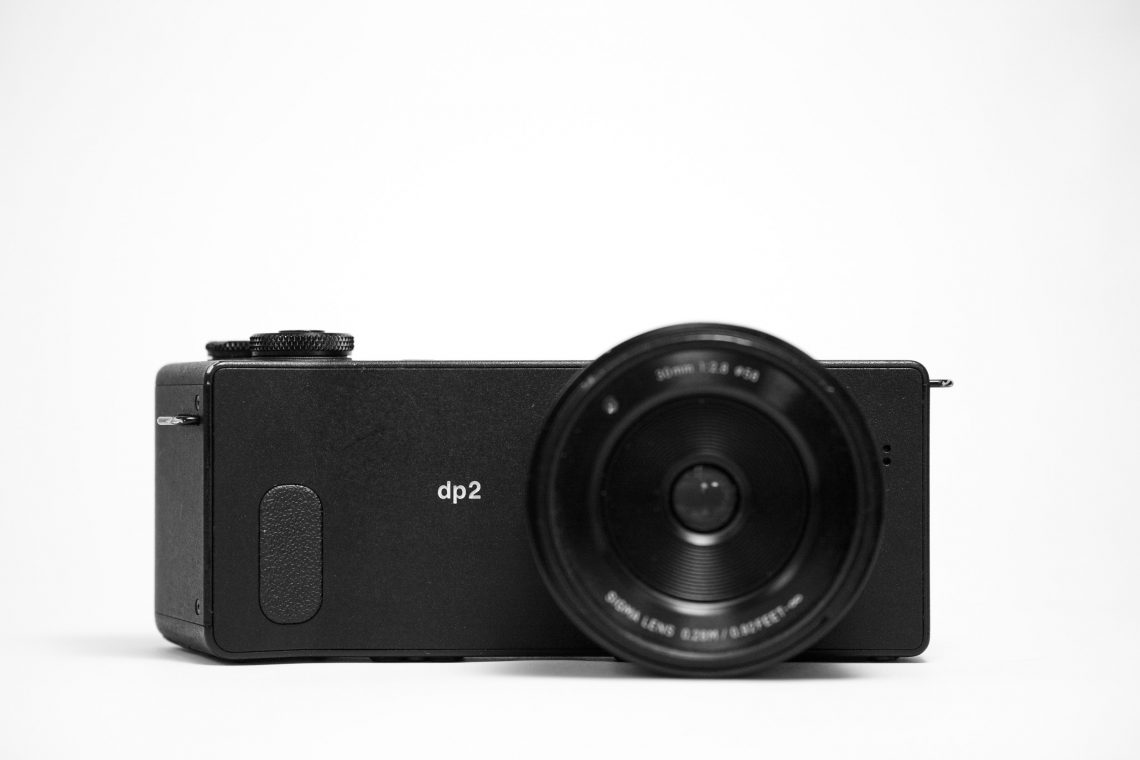
Sigma dp2 Quattro
I call this my museum camera. Some museums do not allow cameras with detachable lenses. Cool thing about this camera is the quality is just as good, if not better – than my Sony in certain situations. 100 ISO and daylight, this is a great camera. Low light, not so much.
Lenses
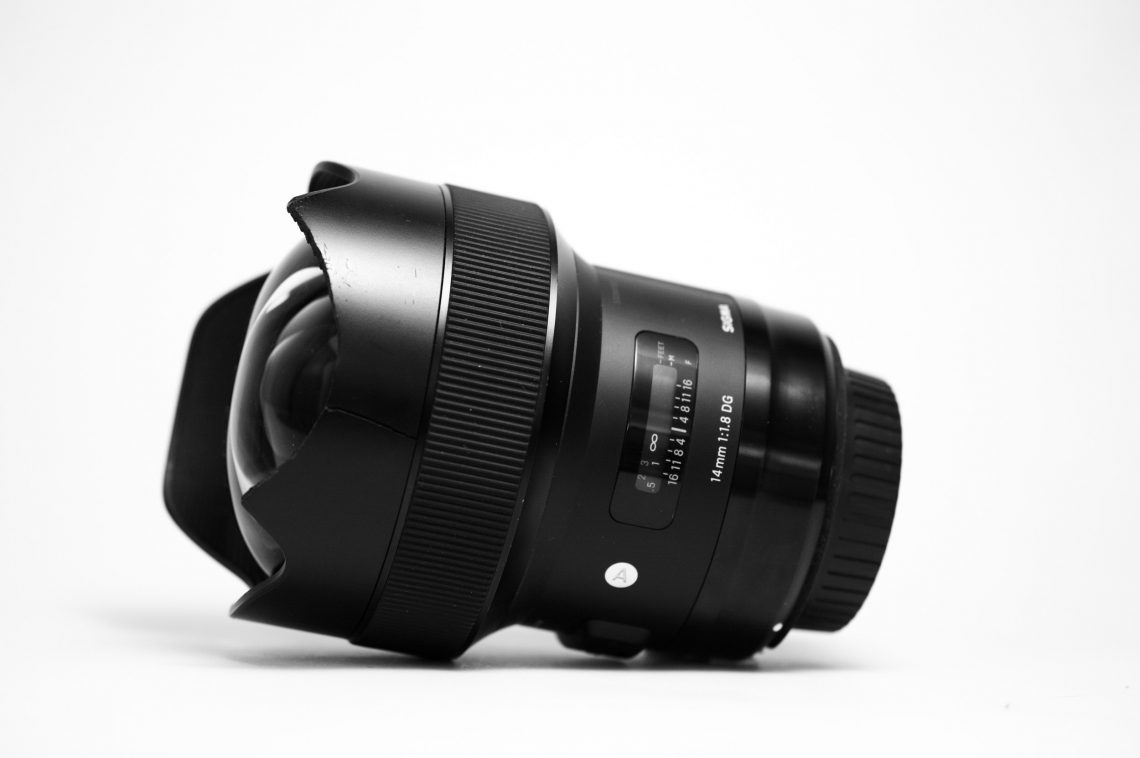
Sigma 14mm f/1.8 Art
This is a fun lens. A bit more distorted than the 20mm, but the 1.8 at 14mm is beautiful. Hard to use at times because the focal plane can be so narrow – but once you figure out how to exploit it’s strengths, it’s an amazing look. I use it for behind the drummer shots.
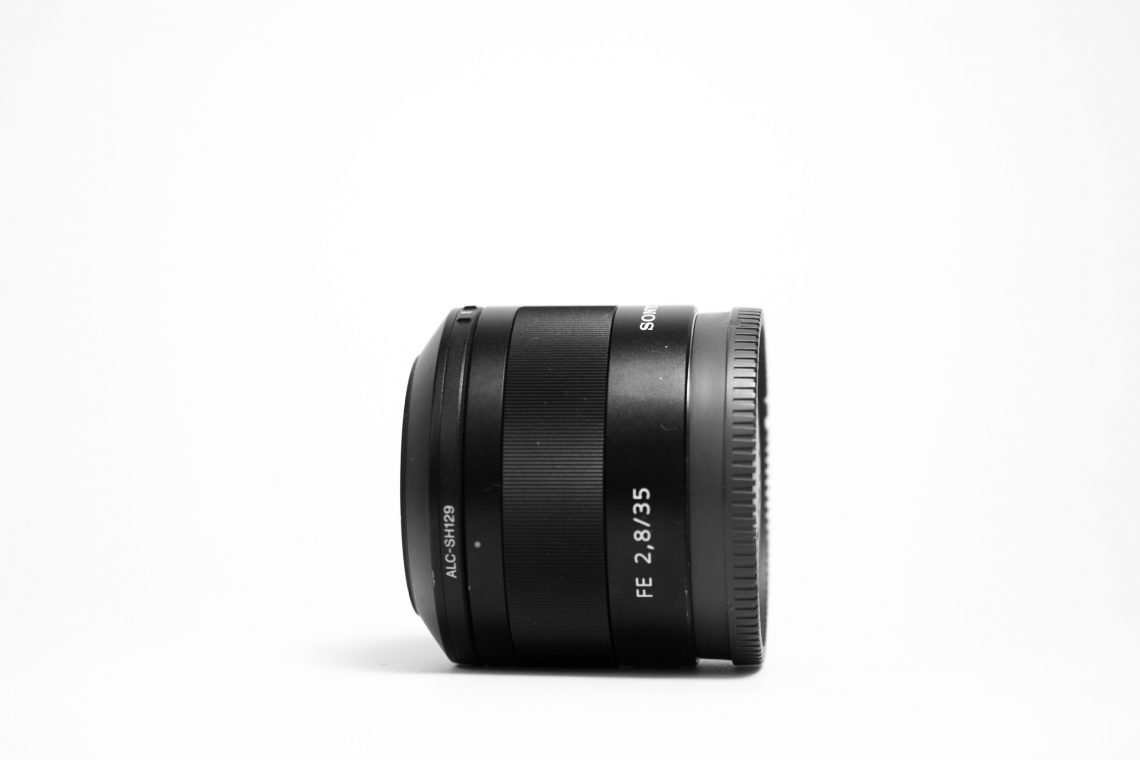
Sony 35mm f/2.8
The Sony 35mm is my only Sony lens. I have nothing against Sony, I just love Sigma. The one downside of the majority of Sigma’s glass is the size – it can get quite large. Sometimes when I am working I want to be very hidden. The Sony 35mm does this. This thing is tiny, quick, and beautiful. The focal length is a perfect walk around look.
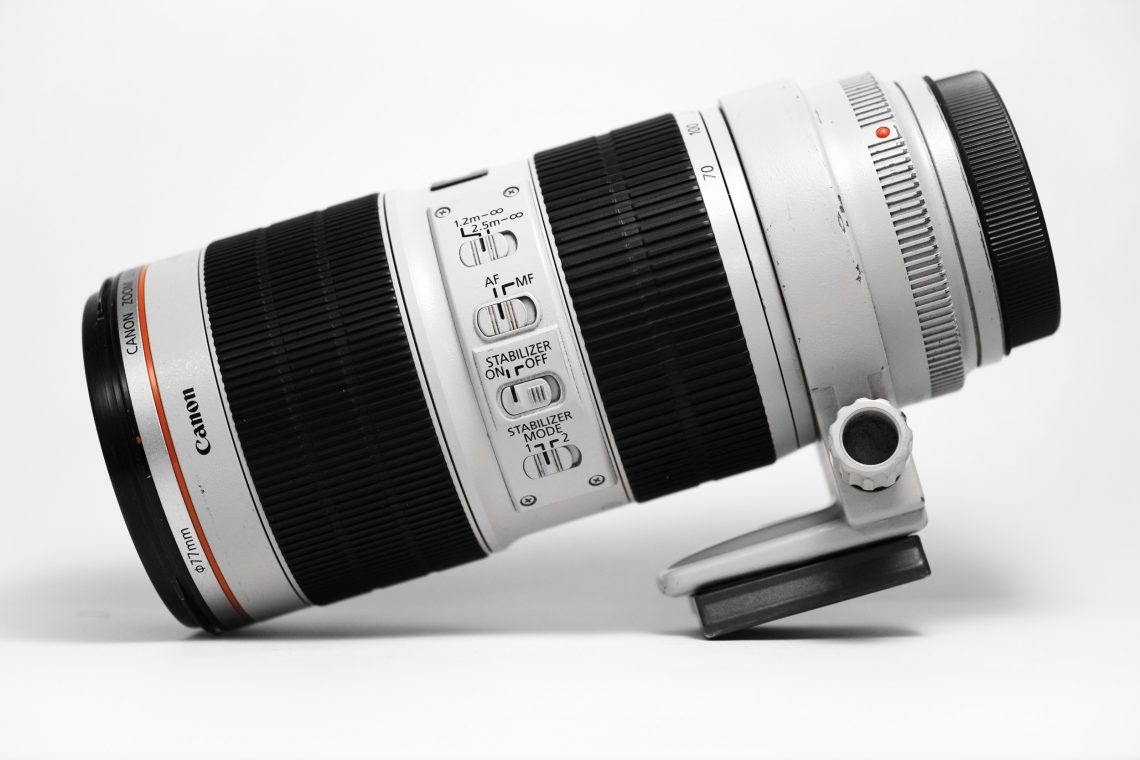
Canon 70-200 f/2.8
This is a paragraph about using the gear
Bag
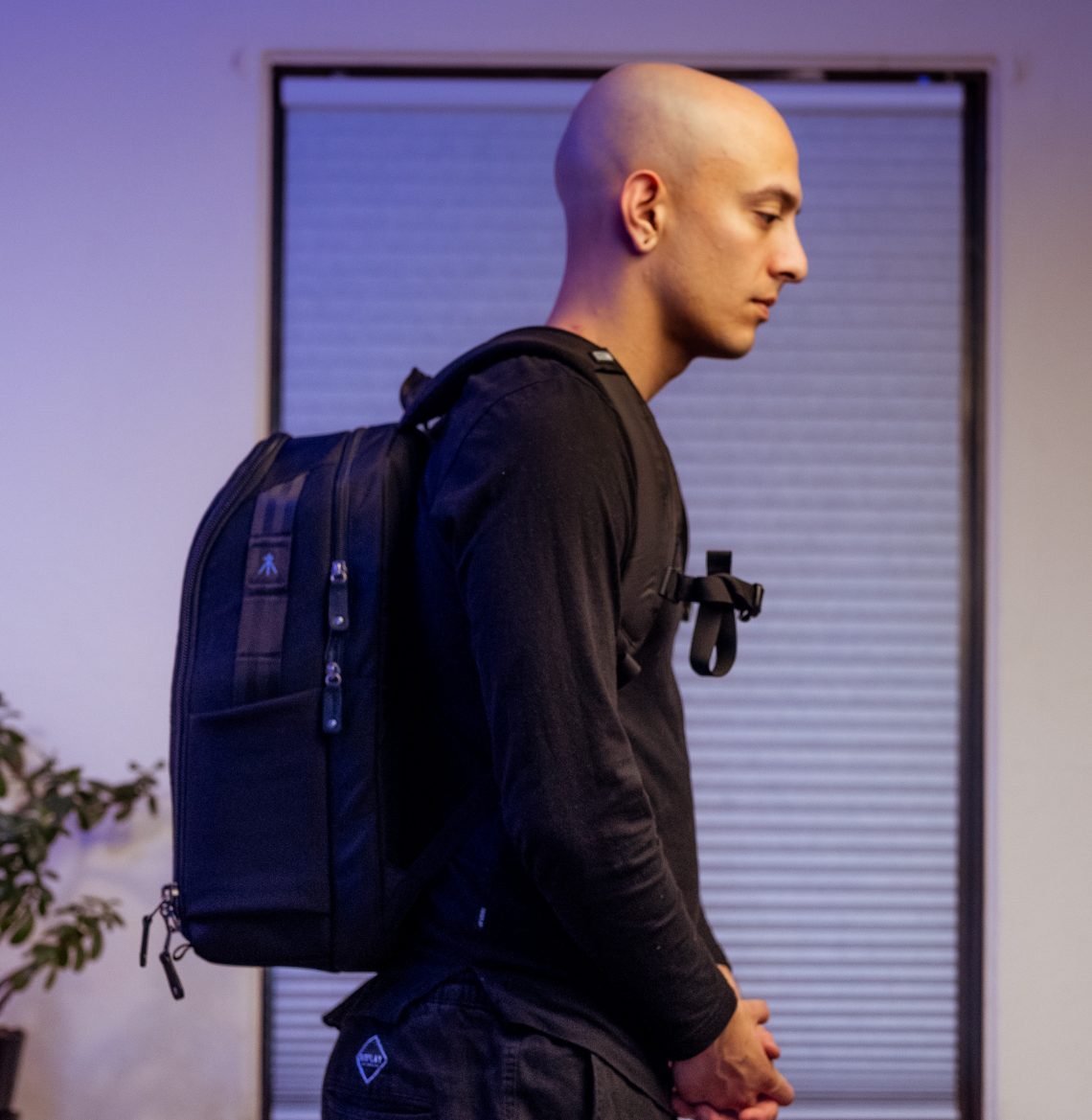
Think Tank Urban Approach 15
The Think Tank Urban Approach is perfect for when you travel setup has to be the same as your shoot set up. This usually happens to me when I am with DJ’s and flying daily, or maybe even multiple times a day. The bag is small and looks slick, not like a camera bag. I put one camera, 2-3 lenses, and a few accessories as well as computer inside. Check out my hands on walkthrough of the bag here.
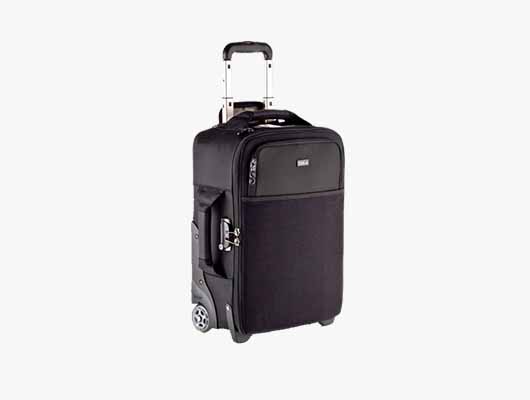
Think Tank Airport International 3.0
The Think Tank Airport International is a durable beast of a bag. It is very space aware and intelligently built. You do not lose any potential real estate to bulky dividers or unnecessary packaging. It fits a few lenses and a few cameras and fits nicely above head on a plane or very snugly by your feet… although I don’t suggest the latter except in times of need. I have yet to break this bag. It is very strong, I am good at breaking bags.
Behind The Scenes
Music Festivals Photography Gear
Music Festivals are all yours skills at once, constantly – for a few days at time. Live, portrait, lifestyle – in order to capture the life a music festival you have to be ready for anything. A reliable and fast focusing camera body combined with zoom lenses are a must. I was shooting on Canon for the majority of my career up until last year where Sony finally won me over with their mirrorless cameras.
Camera

Sony a7III
Like I said in the description, check out my full blog for why I like this camera for music festivals. The TLDR of it – this thing does everything ever other camera does, but better. Most important it grabs focus with Iron Man mask capabilities and it shoots as fast as I could imagine a camera shooting.

Canon 5D Mark III
This is my trust backup. It mostly just sits in my bag, but I always have to bring one to avoid nightmare situations. It was a great body for years, and it still holds up well.
Lenses
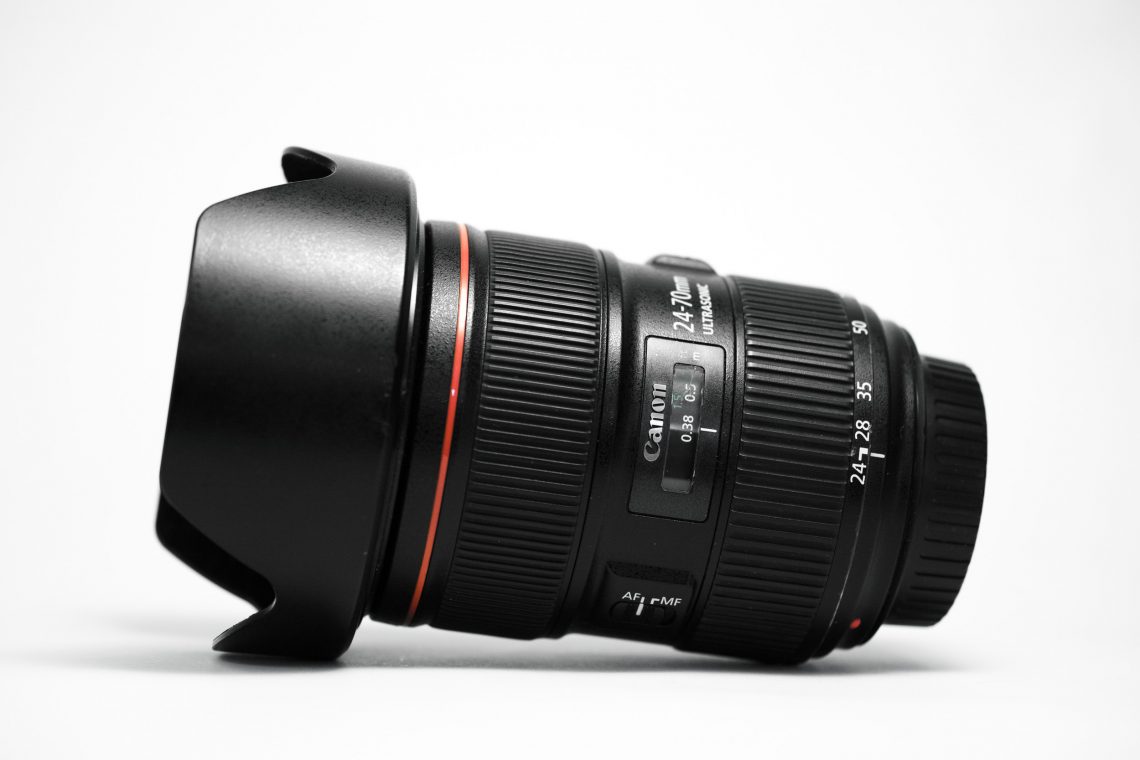
Canon 24-70mm f/2.8L II
Zoom lenses are a must. Between this and the 70-200, you have just about every focal length you will need for 90% of your images. The cons of using a zoom lens over a prime lens are negligible at best. There is nothing worse than missing a shot because you had the wrong focal length attached to your camera.

Canon 70-200 f/2.8
The 70-200 is great for when you need a bit more reach than the 24-70. Some of these festivals photo pit is about 20 feet from the front of the stage – and that is not taking into account how deep down the stage the artist is. In addition grabbing authentic candid images on the go can be difficult if you can’t *snipe* someone from far away. This allows for that.
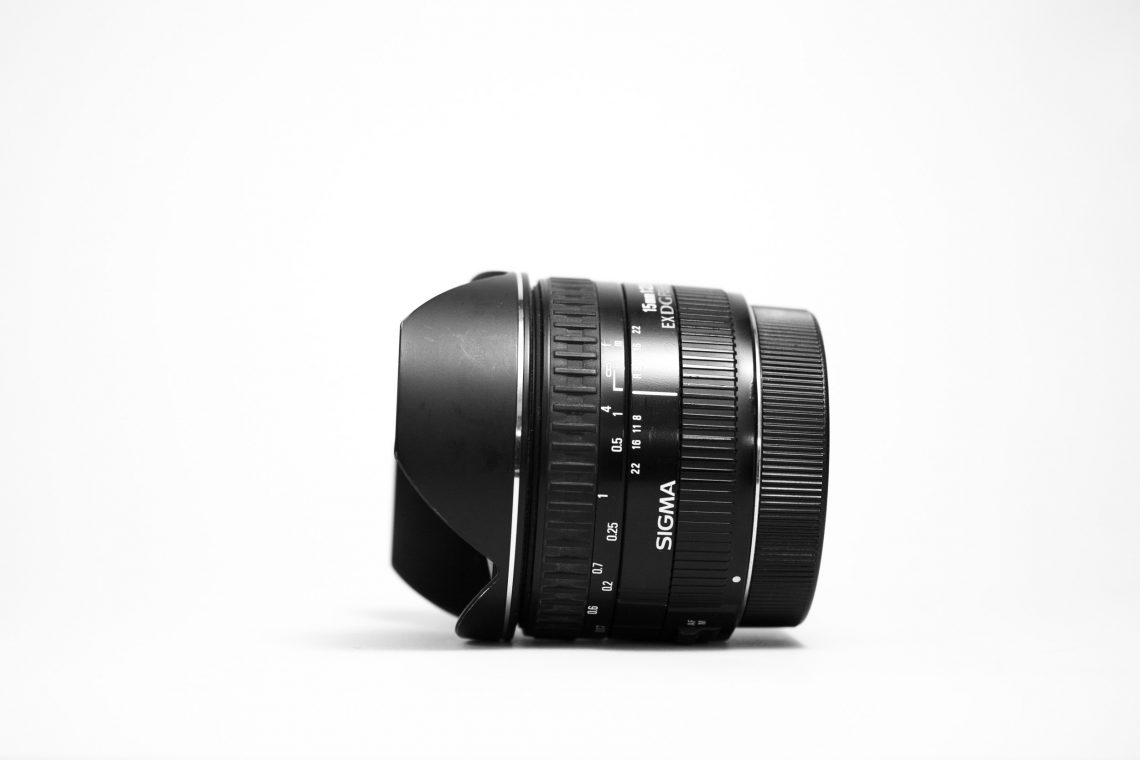
Sigma EX Fisheye 15mm f/2.8
I love a good fisheye shot. It can get old quick, but sometimes large crowds just need to be captures, and massive stages need to be viewed as the worldly towering man made structures they are. A fisheye gives you that larger than life feeling. It can also make someones face look twice as wide, so use your tool wisely
Bag
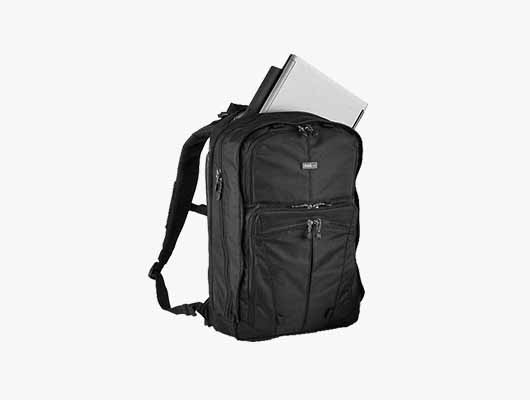
Think Tank Shape Shifter 15 V2.0
I use this bag to carry my gear from stage to stage, then i set it down. At a festival you will usually have an office, or a place to dump your images – so I take out my computer etc once I arrive, and then just keep the important stuff on me. I do not shoot with a bag on my back.

Think Tank Airport International 3.0
If I am bringing more gear than a few zoom lens, or anticipate some long walks, a roller bag if great. Some festivals have gravel grounds, some are mud – so it would be good to know that ahead of time when considering to take a bag that rolls. If I shooting from stage I will often just set this in a corner and then grab gear from it as I need it.
Behind The Scenes
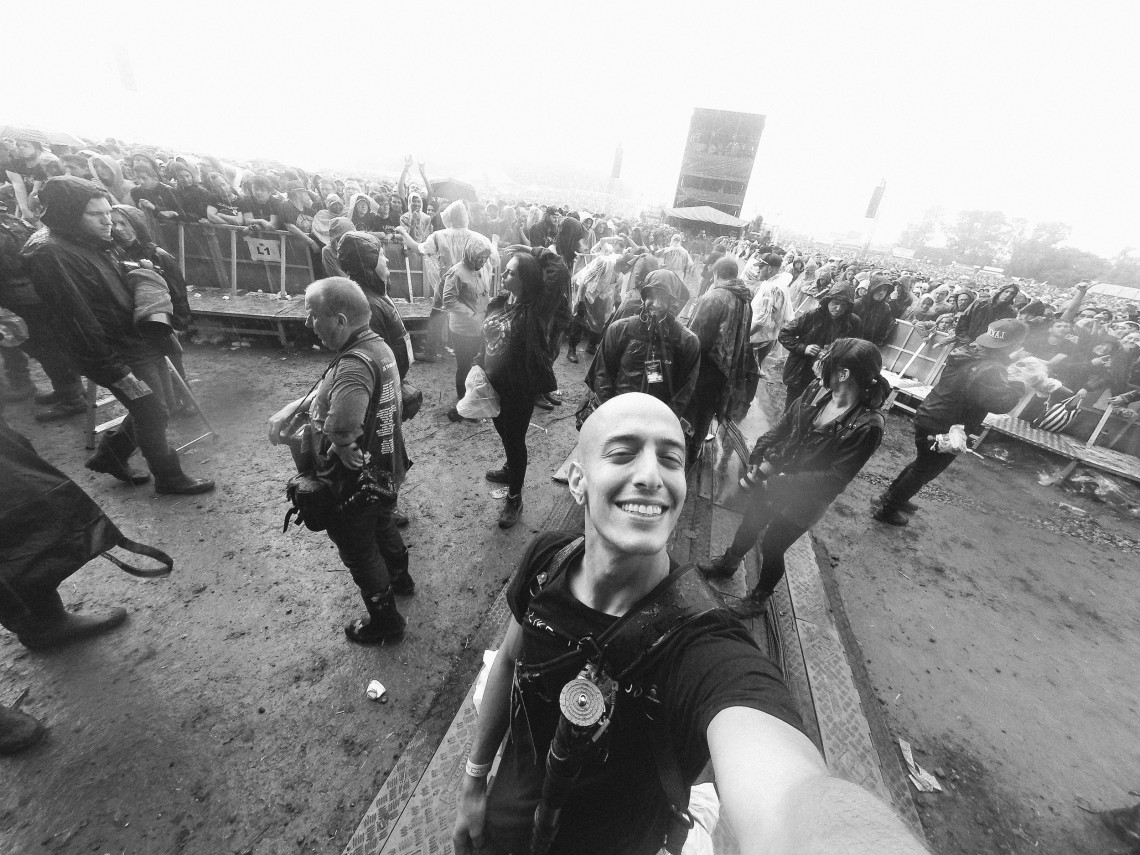
This is me soaking wet in the photo pit 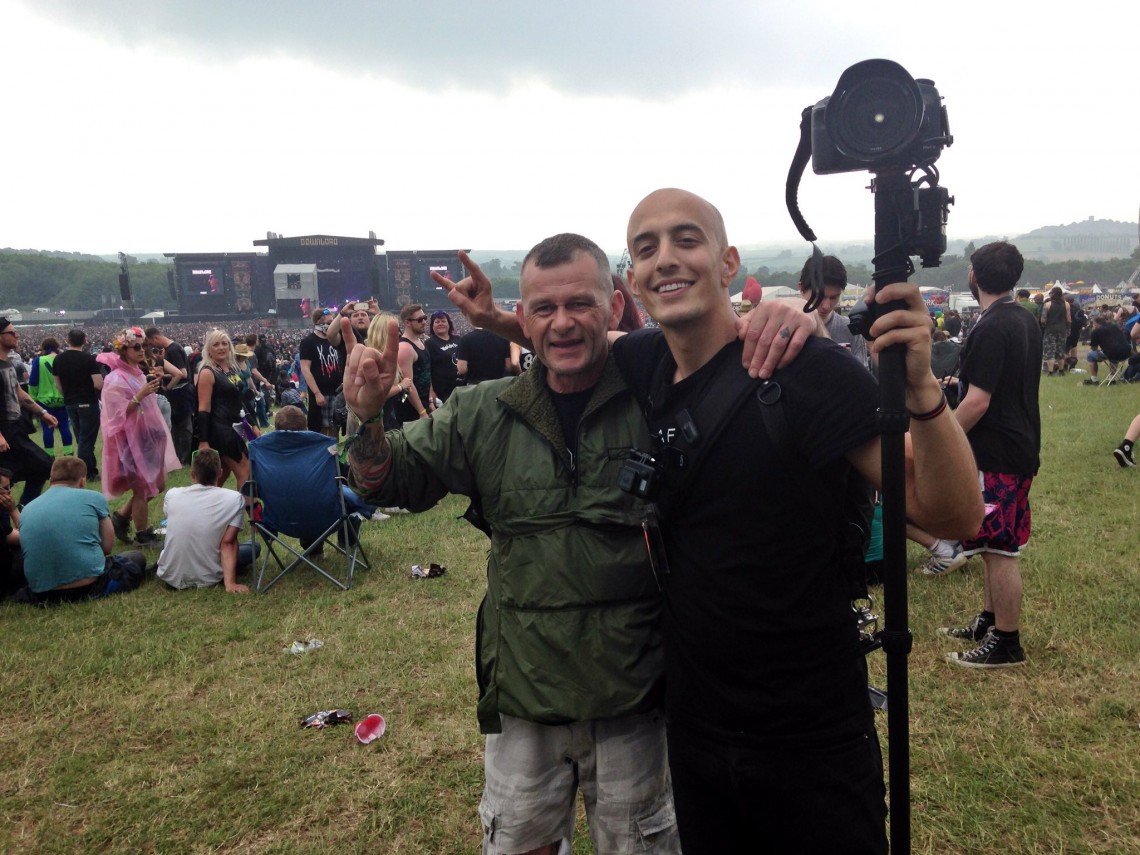
I met this dude and he was very nice / very drunk but mostly just very nice, we took a photo together 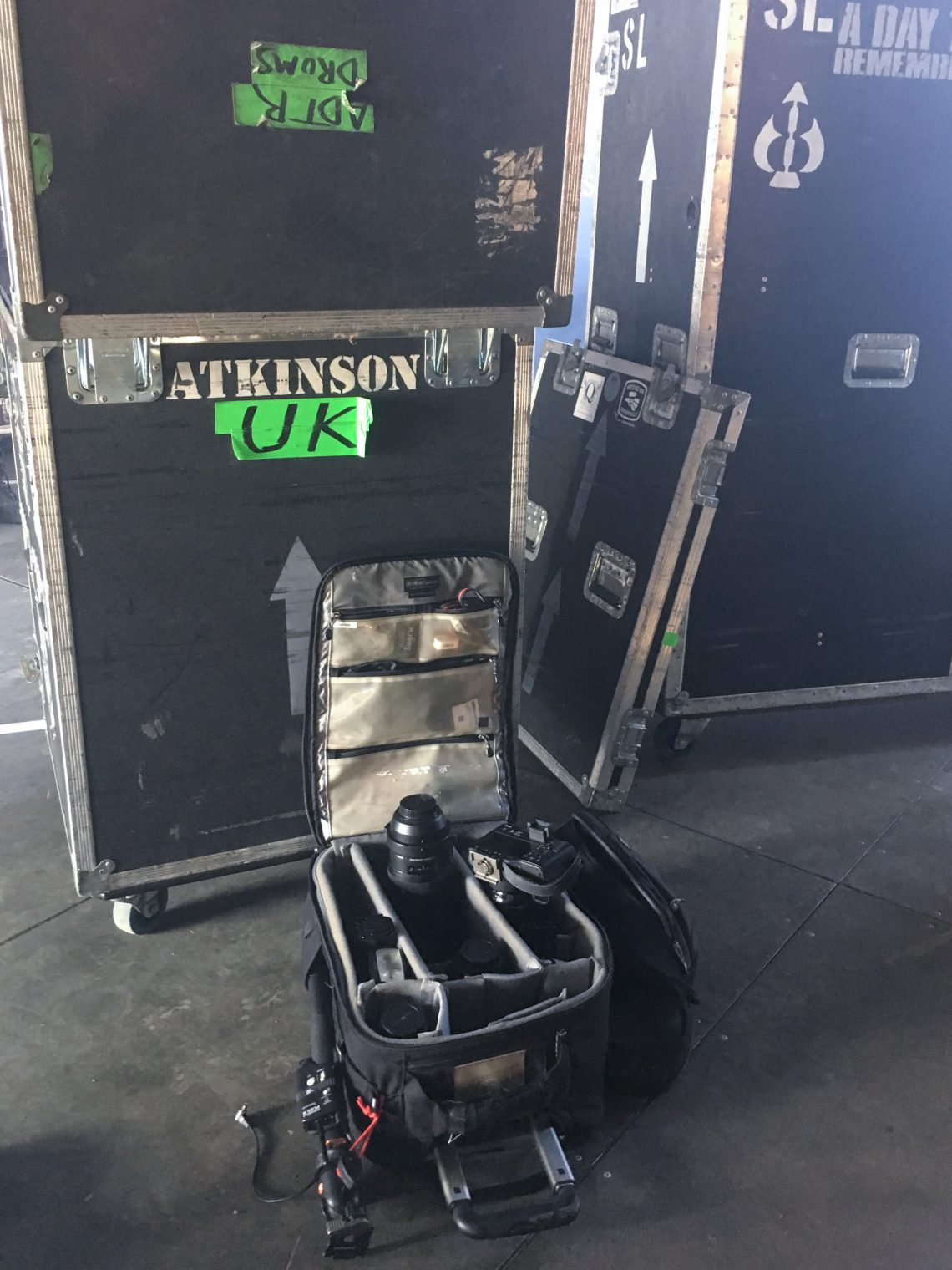
My gear on stage, grab and go setup thanks to Think Tank 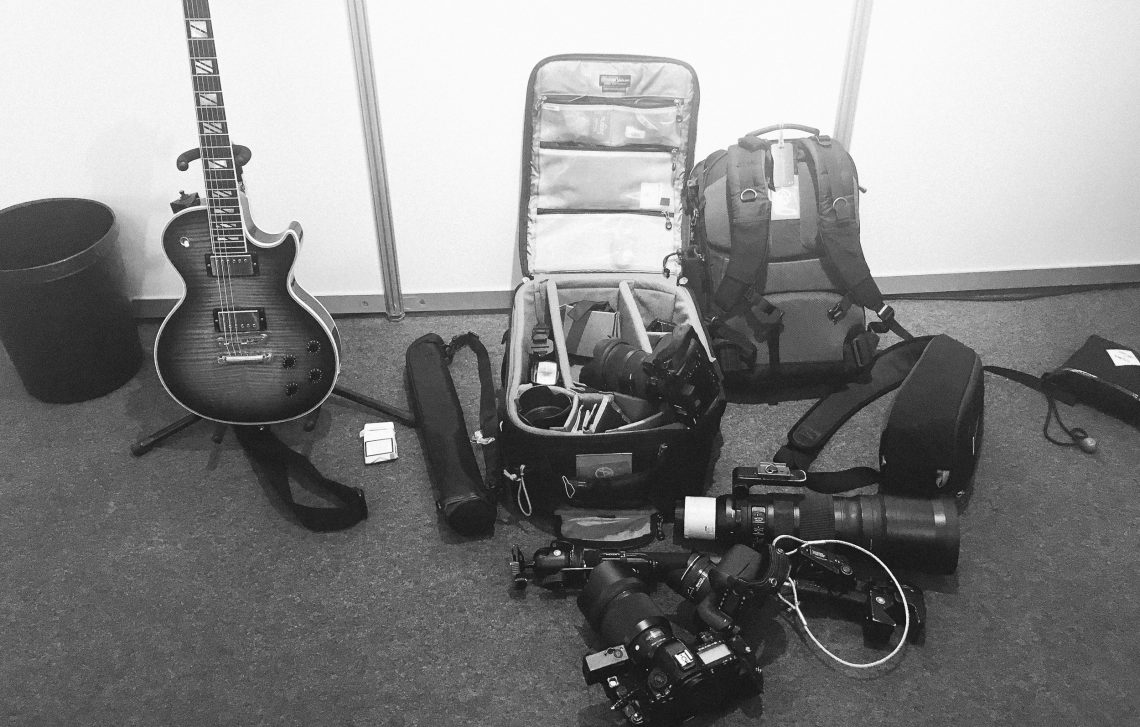
My camera has guitar friend 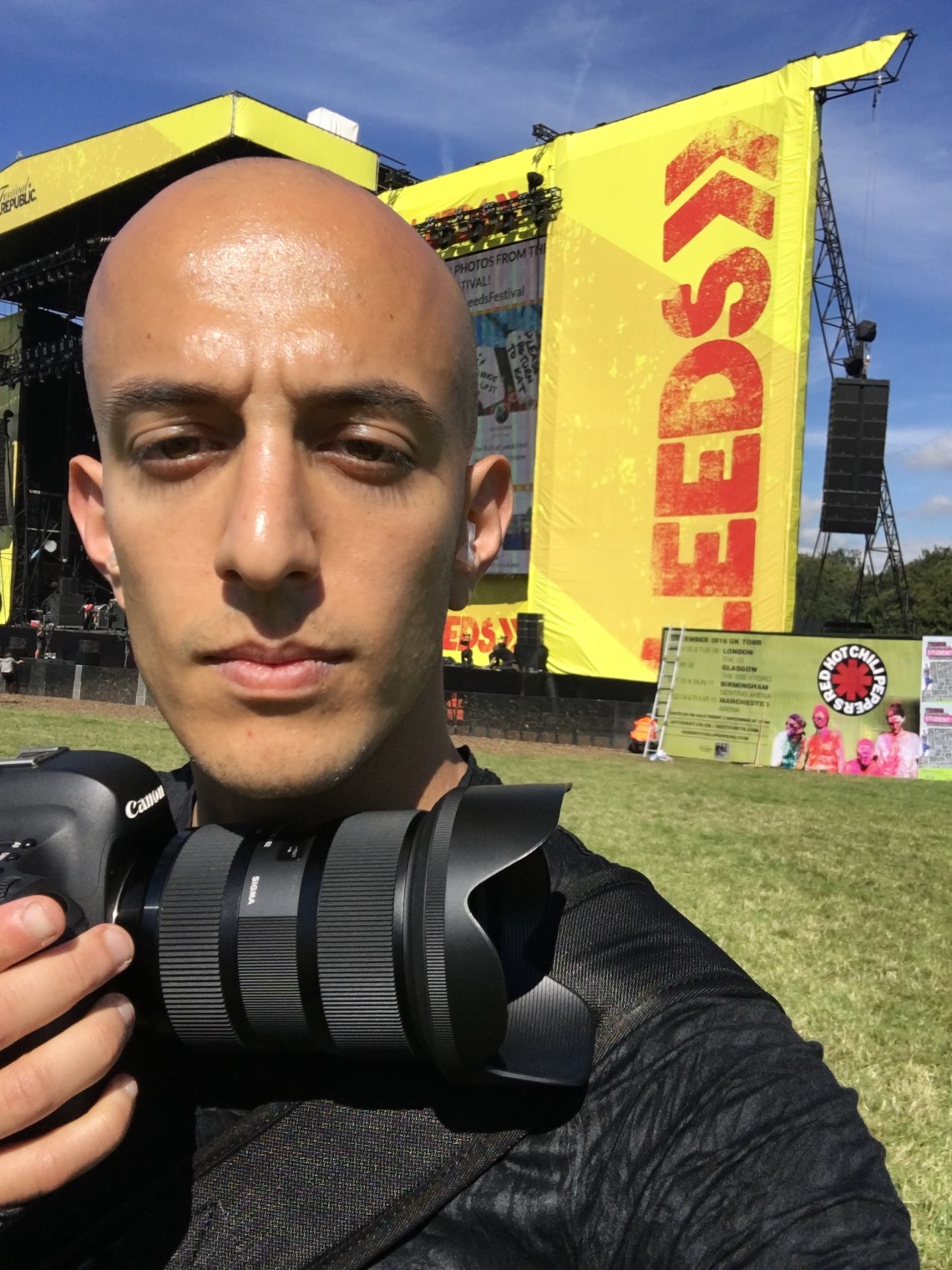
This is me at Leeds Festival 
These are my cameras
Portrait Photography Gear
Portrait photography is where you really get to exploit the capabilities of you gear. Slow it all down, focus on one shot – and make those prime lenses crisp quality really shine through.
Cameras

Sony a7III
Well I love this camera. I use it for everything, portraits too. It is just a beautiful camera.

Sigma dp2 Quattro
The Sigma dp Quattro cameras do not get enough love. I mean, I get it, they kinda suck is most settings. But if you take them to a daylight or studio lit portrait shoot – you will love them. They look quirky and preform better than any of my other cameras.The color is beautiful and unique and I’ll shoot with these even when I probably shouldn’t at the chance of getting a useable image. The only difference between all these dp# cameras is the focal length. The dp2 is 30mm
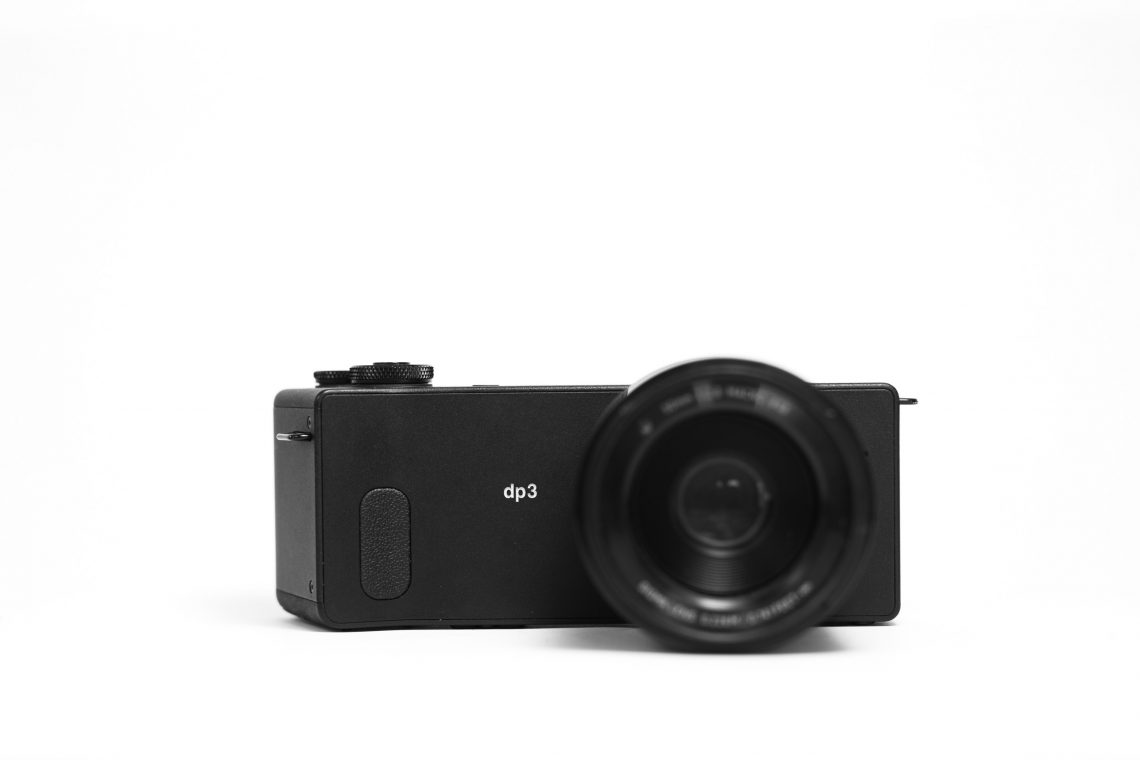
Sigma dp3 Quattro
This is a 50mm version.
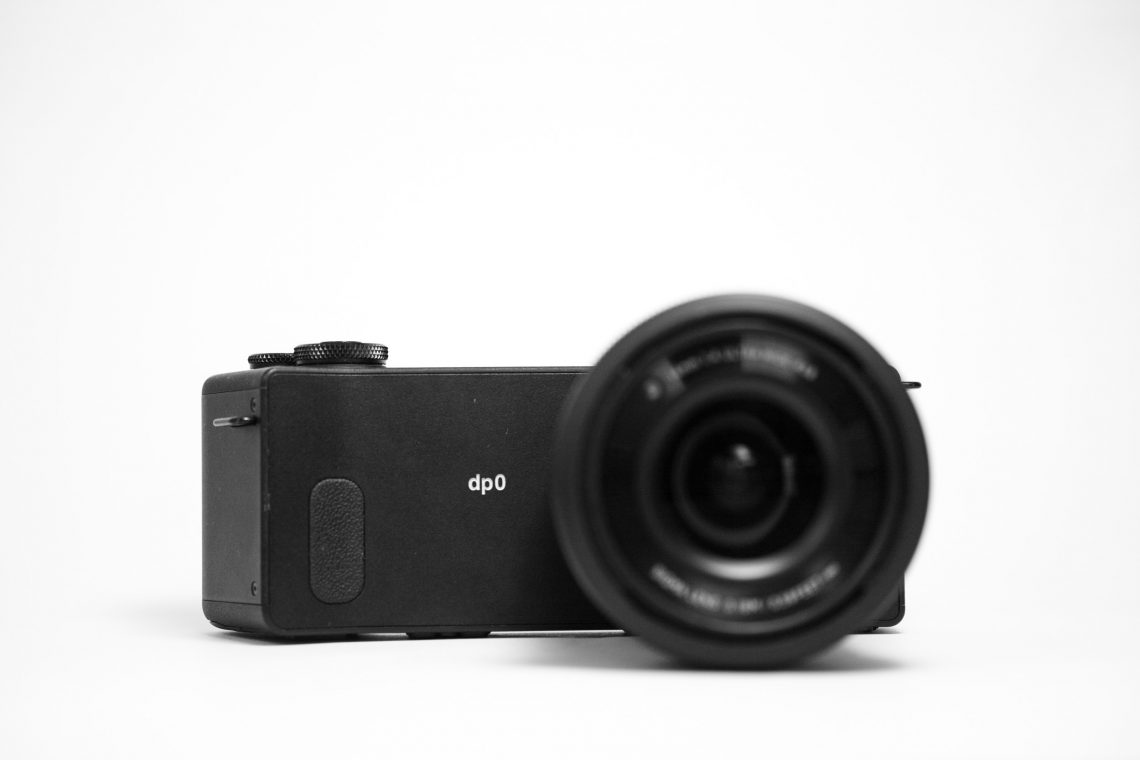
Sigma dp0 Quattro
This is a 14mm version.
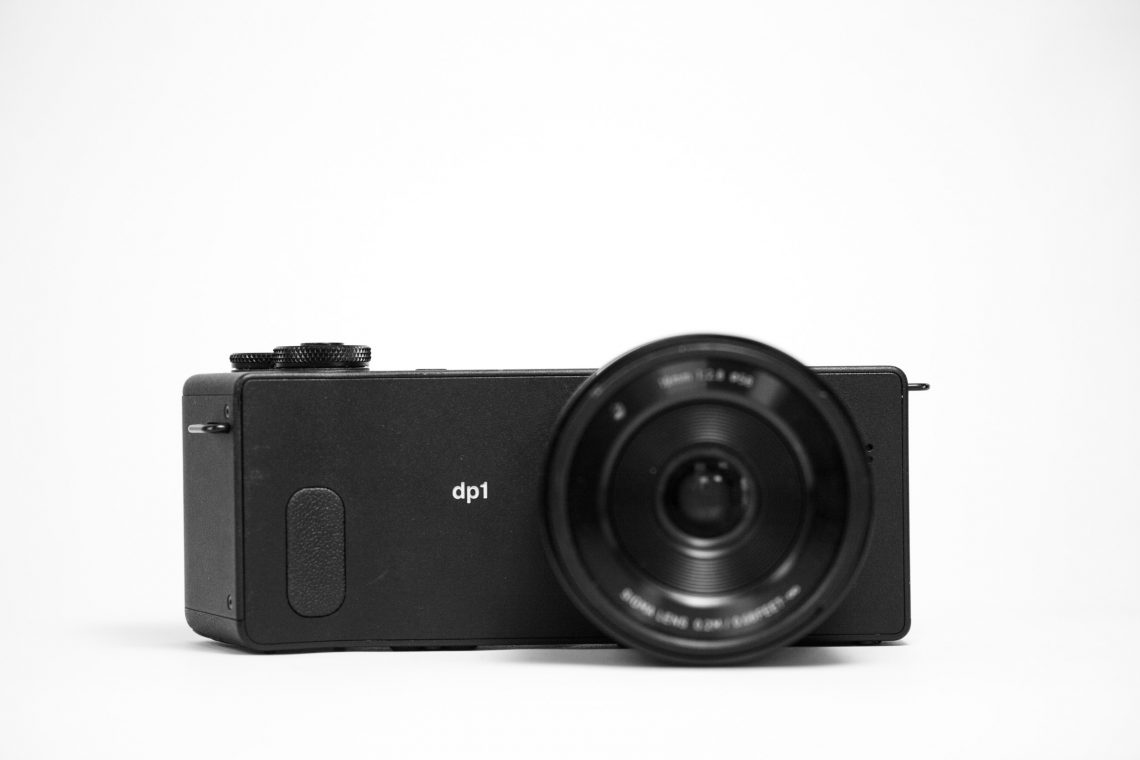
Sigma dp1 Quattro
This is a 19mm version.
Lenses
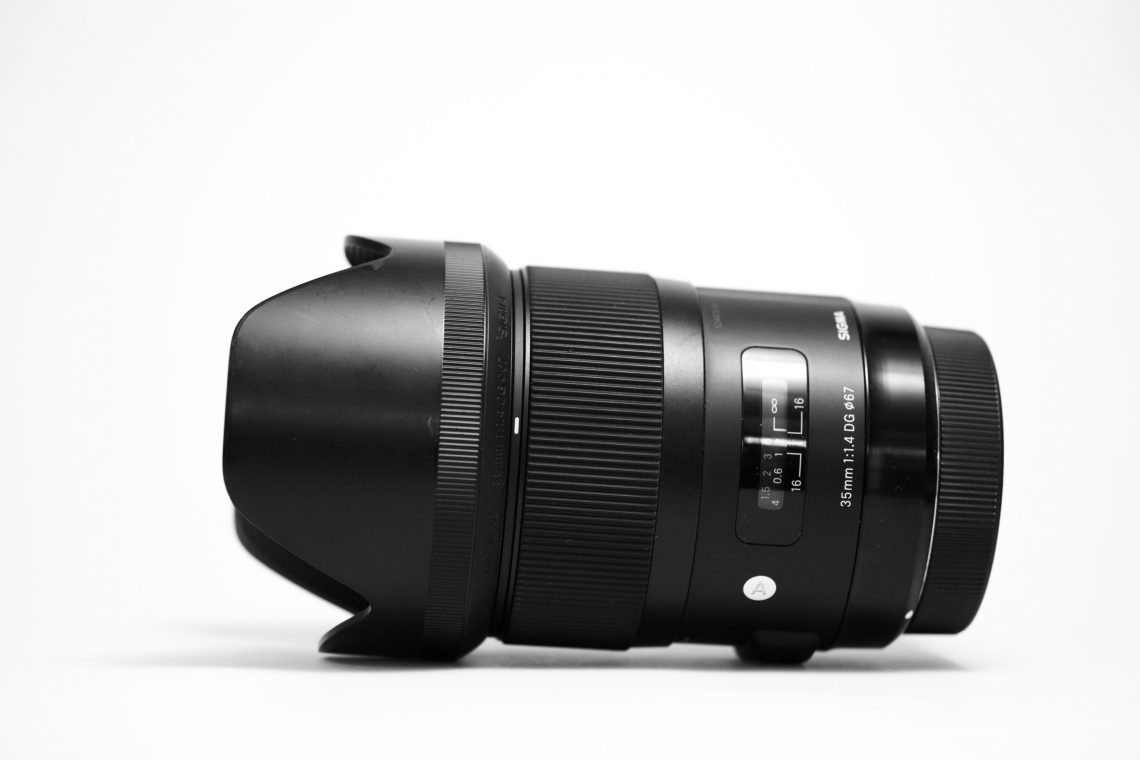
Sigma 35mm f/1.4 Art
The Sigma 35mm is beautiful for on the go portraits. I like it a bit more than the 50mm, assuming you can get close to the artist. If you are too far away sometimes it feels less like a portrait and more like a snapshot.
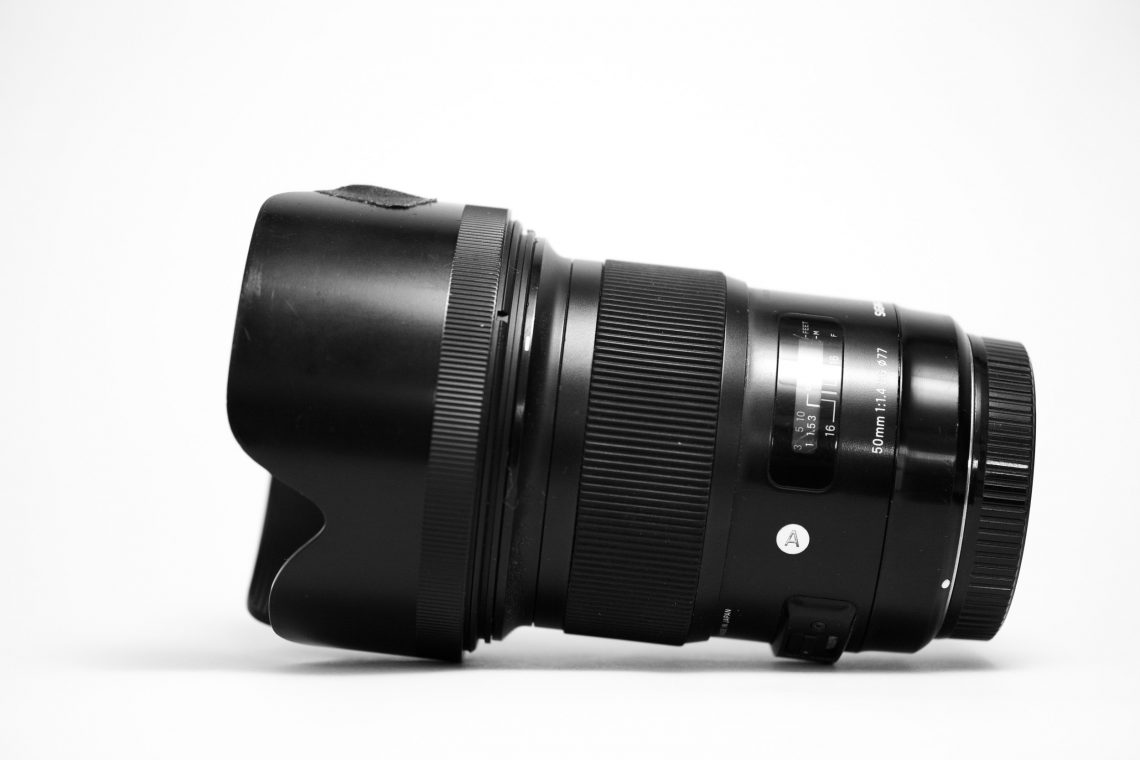
Sigma 50mm f/1.4 Art
I tend to use the Sigma 50mm as a good starting place for shooting portraits. You can never really go wrong with it. If you want natural look images, stick to the 50mm.
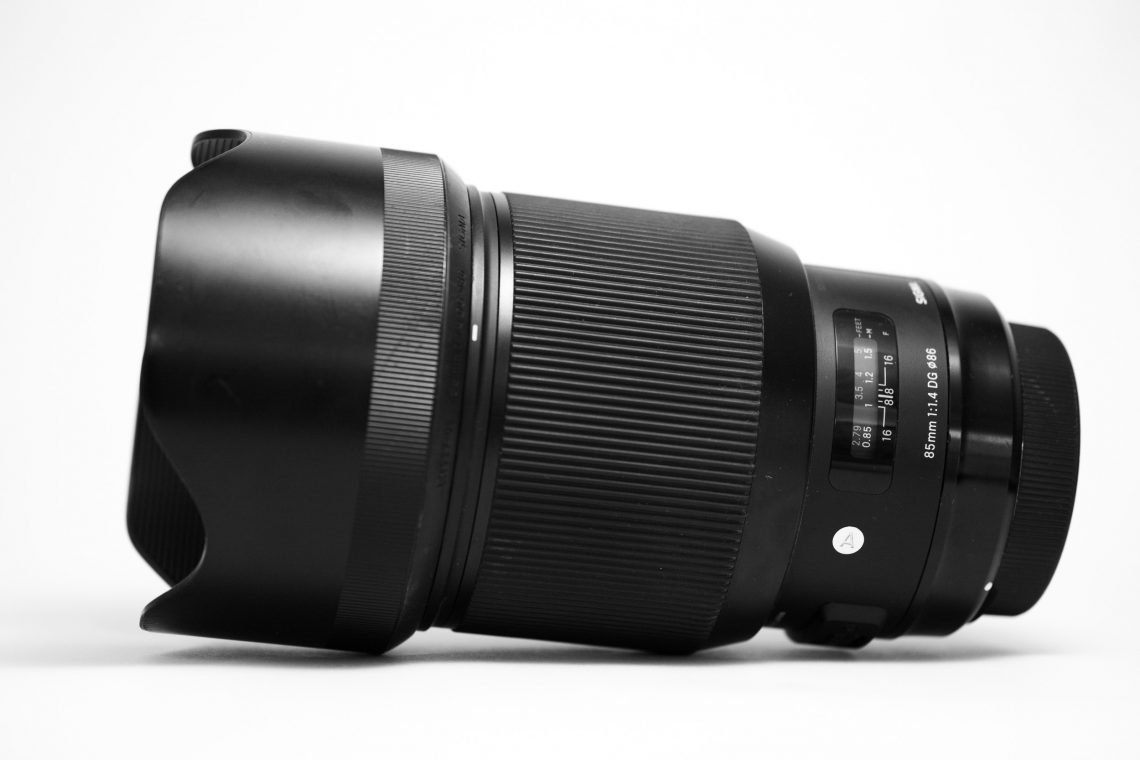
Sigma 85mm f/1.8 Art
This is a paragraph about using the gear

Sigma 105mm f/1.4 Art
This is a paragraph about using the gear
Bag
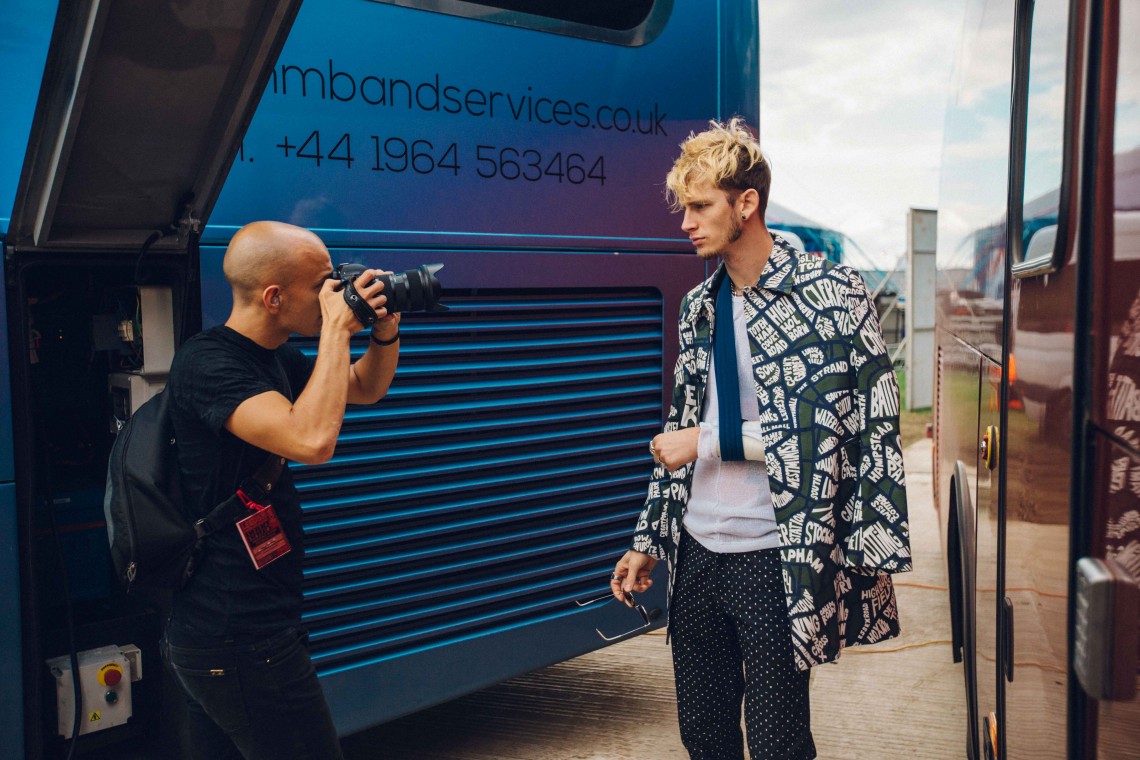
Think Tank Photo TurnStyle 10 V2.0
This is a paragraph about using the gear
